Ep. 19: Yona of the Dawn vol. 1 & Yakuza Lover vol. 1
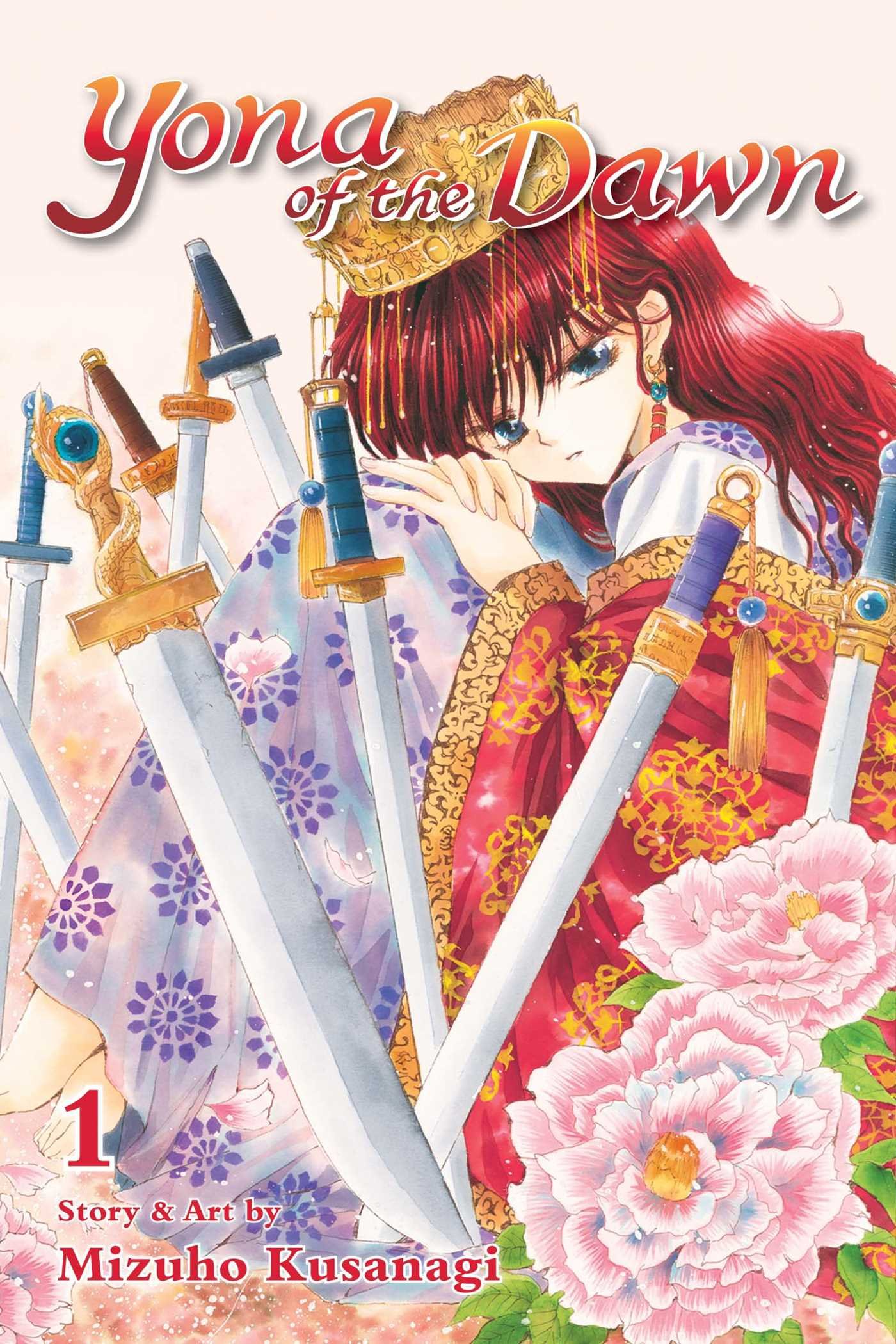
It’s a very big week for the Mangasplaining crew, as we tackle our first AND second “official” shojo manga releases… And they couldn’t be more different! Get ready for the teen fantasy adventure series Yona of the Dawn and the dangerous and sexy adult romance of Yakuza Lover on this episode!
We’d like to thank the folks at VIZ Media for sponsoring today’s podcast through the review of Yakuza Lover. Click this link to check out a free preview of the series https://bit.ly/YakuzaLoverPodcast (you’ll have to create an account because it’s spicy material!)
Powered by RedCircle
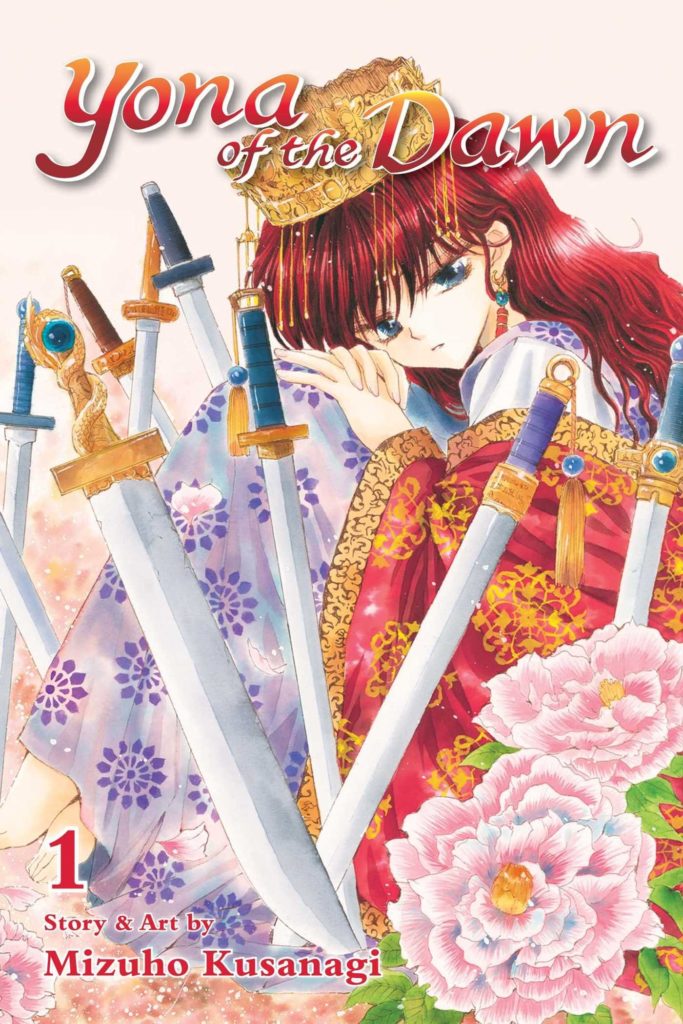
Yona of the Dawn Volume 1
暁のヨナ
By Mizuho Kusanagi
Translated by JN Productions
English Adaptations by Ysabet Reinhardt MacFarlane
Touch-up Art and Lettering by Lys Blakeslee
Design by Izumi Evers and Yukiko Whitley
Edited by Amy Yu
Published by VIZ Media (Print/Digital)
00:00: Before we get started: We’ll try to keep the big spoilers to just volume 1, but a couple of us read a little further and talk about how themes develop. Just a heads up.
Also, we just kind of dive into this manga without ever actually explaining the plot, or whatever. You might get a little lost at the outset. So, briefly, spoilers for the first volume, and then back-of-the-book-level bits of info for volumes 2-4:
SPOILERS: Yona is a princess in an ancient kingdom, who’s been protected from everything by her dad, the King. The King made Hak, a young man who used to be her playmate and is in line to be chief of the Wind Tribe, her personal protector. Also, she’s in love with her cousin (also a childhood playmate), Su-won, who is also a prince of the kingdom, which sets up a weird love triangle between the three of them. Then Su-won kills the King and becomes the King, Hak and Yona flee the castle, and learn that if they find the legendary dragon warriors they can raise an army to defeat Su-won and regain the Kingdom. Also maybe Yona is magic. Now you hopefully know what we’re talking about…!
03:53: So I kind of mentioned this in the show notes last week, but yeah, Japanese manga genres kinda-sorta aren’t entirely relevant in North America (and, one could argue, in Japan). There’s nothing inherently wrong with a genre of “girls comics,” I think, as it’s important for everyone to feel like there are books just for them, girls included (Although maybe there is something inherently wrong with that, rather than how it’s applied, and someone will explain their take in the comments?). But I also think that there are dozens of actual genres within the shojo grouping, and then within those genres, further sub-genres. Shojo isn’t just one thing, and I think it often gets treated that way, particularly in the west, and it’s not doing this massive bunch of largely excellent comics any favours.
07:14: I really wish there were a low-cost, low-barrier-to-entry way “in” to shojo manga for people! Maybe not $2 a month like Shonen Jump is, but yeah. The ‘discoverability’ of shojo manga is really tough unless you’re hyper-committed… or a title gets an anime! I miss the old Shojo Beat magazine that VIZ used to publish a lot. Maybe, again, some day… some way…
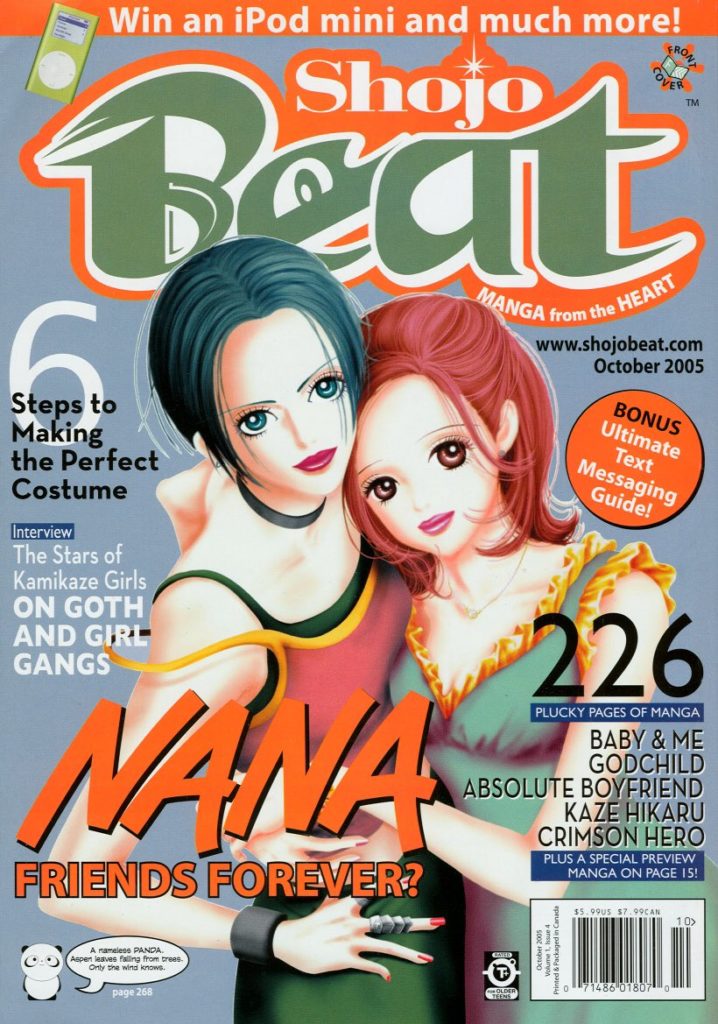
09:00: So, Harem manga. A dude ends up with a ‘harem’ of different, cute girls surrounding him, vying for his attention. A classic harem manga in English would be something like Love Hina, by Ken Akamatsu. A reverse harem is when a lady gets a ‘harem’ of different, cute guys surrounding her, vying for her attention. The most popular examples in English are series like Ouran High School Host Club, by Bisco Hatori, and, as Deb mentions, Fushigi Yugi, by Yu Watase.
Looking at popular anime and manga today, while there are still harems/reverse harems, this style or subgenre has become so popular that its infiltrated most other romantic, slice-of-life manga. Why have a rival for the lead’s affection when you can have multiple rivals, each designed to appeal to a different type of reader and sell merch featuring all the different characters? I’m not gonna name names, but this trope shows up everywhere now, even in shonen battle manga… Heh. And I should point out that harem manga also exist within genres focusing on same-sex attraction (like BL and Yuri), although it’s not quite as frequent.
11:50: I think Chip’s confusion here is pretty key: Can this be a shojo manga because it has fighting in it, or is it also shonen manga? I think that REALLY makes it clear how confining that genre tag is, particularly for the uninitiated. To be clear though, shojo can have fighting, fantasy, mystery, supernatural, crime, horror, and so much more…as well as sex and romance. 🙂
13:25: Yeah that image discussed, with the King stepping in to quell potential violence by spilling his own blood, is actually a great bit of storytelling this volume. They do end up hammering the point home a little bit, but it’s still a good moment.
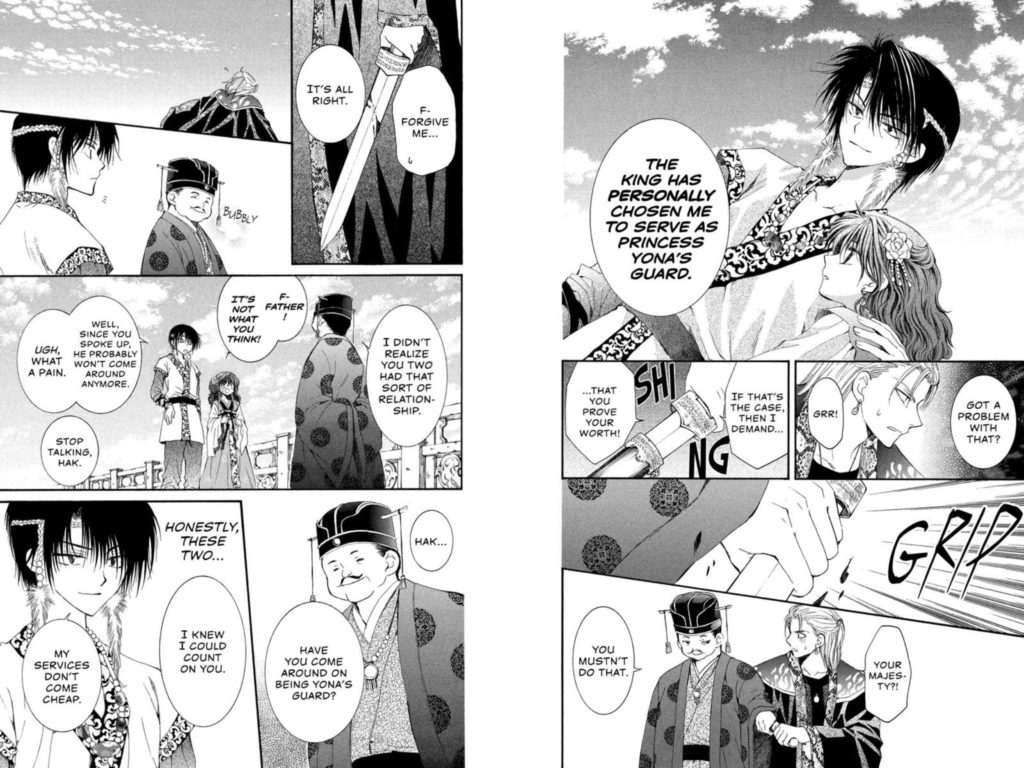
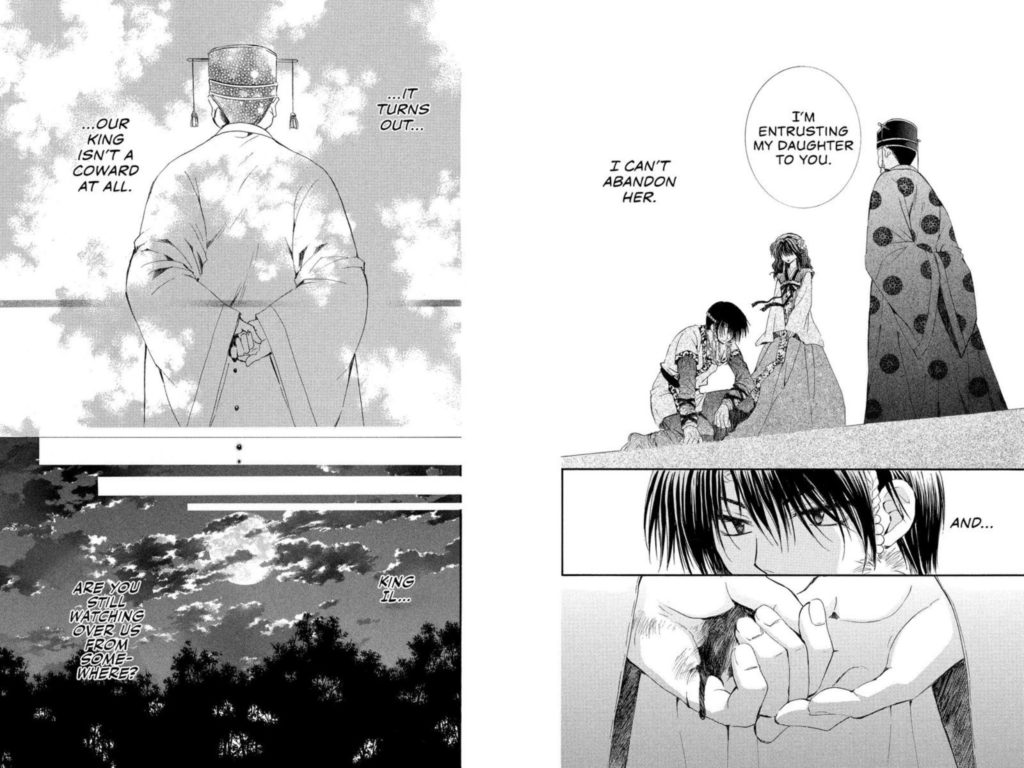
16:15: Regicide-radar? No, MONARCH MUR-DAR.
20:25: JUST TO BE CLEAR: There’s all, all kinds of cousin-love in not just shojo, but across manga and storytelling worldwide and THE BRITISH AND EUROPEAN MONARCHY. Anyway, not trying to call out the genre (or medium) here, just saying that this is not uncommon in shojo.
Here’s the “cousins” tag on Manga-Updates, please go browse that instead of @ing me with any further questions.
https://www.mangaupdates.com/series.html?category=Cousin/s
23:10: Isekai! It just keeps coming up. So just for the record, “Isekai” is a genre of story that shows up primarily in otaku-oriented media (light novels, manga, manwha, webcomics, anime, games) that revolves around a person transported to another world, who must survive in that world and change their lives. It’s a storytelling device to comment on the readers (almost all isekaki protagonists are reader-insert characters) and to explore a new world.
There are hundreds of popular isekai stories across multiple formats, and I just heard David mention Chronicles of Narnia, which I didn’t hear at the time, but yes. Although Narina (most) people can come and go from, whereas Isekai is usually a one-way trip to another world.
25:00: We don’t know a lot about The 12 Kingdoms, I’m sorry. Here’s the Wikipedia for it though, if you’re curious. https://en.wikipedia.org/wiki/The_Twelve_Kingdoms
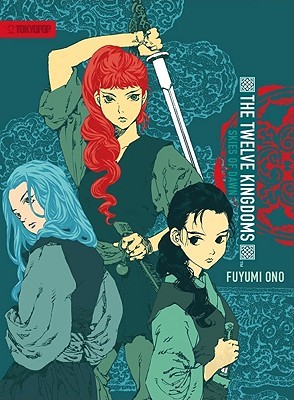
26:30: This is a pretty funny sequence, which actually continues for another bit, about Yona not being too, ah, skilled at life.
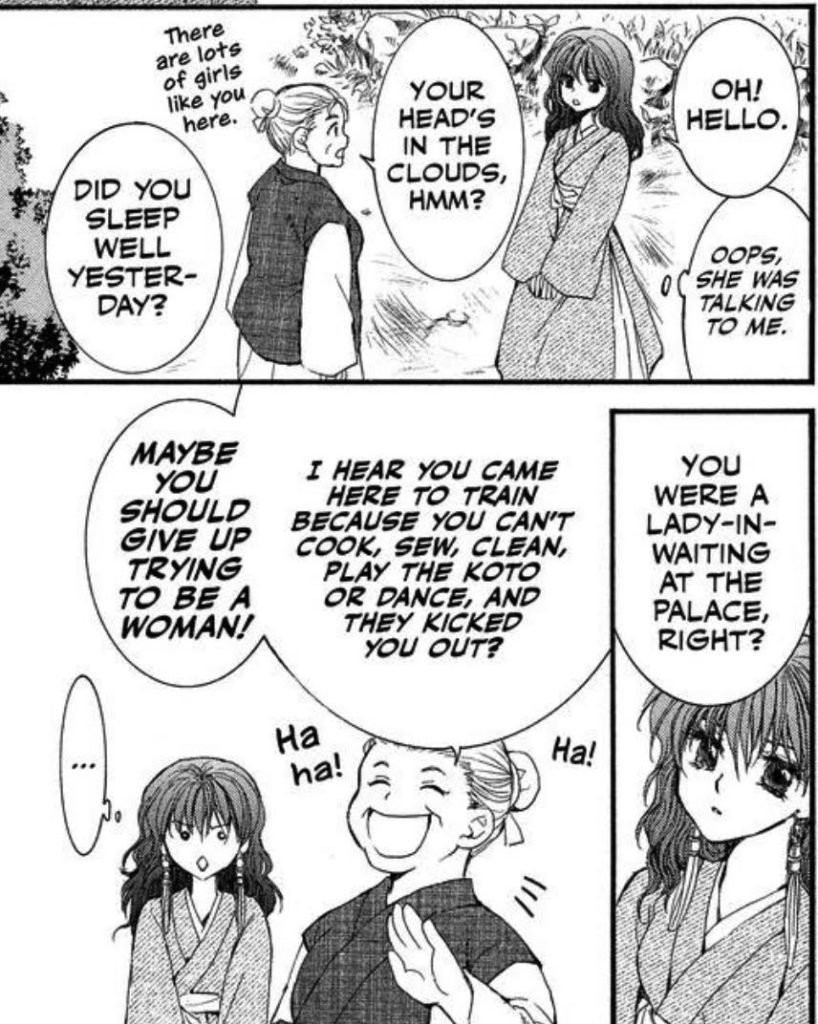
29:20: Hear that weebs? Demolition Man is Isekai.
31:00: I go out of my way to try not to spoil any manga that isn’t in like, the title of the episode (doesn’t always work, sorry!) but in this case, I will say that there are no One Piece spoilers this episode, but here’s a close up on VERY DISTRESSED Luffy face from a statue I saw in Japan.
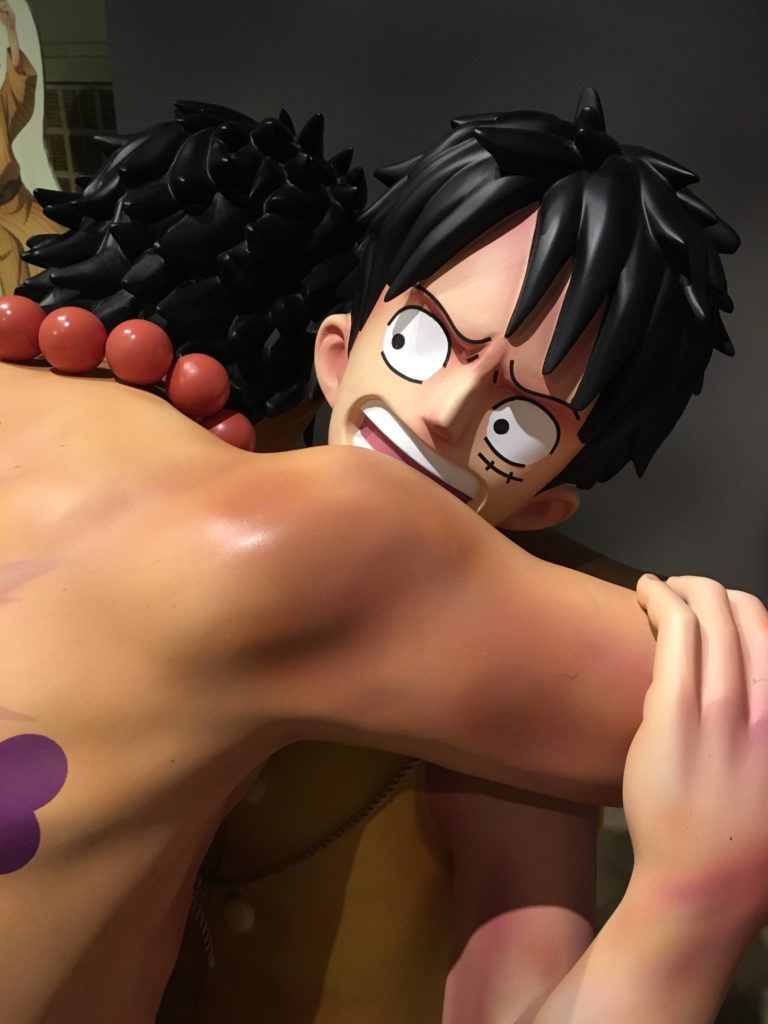
32:10: That Spider-Man page that Chip and David love…
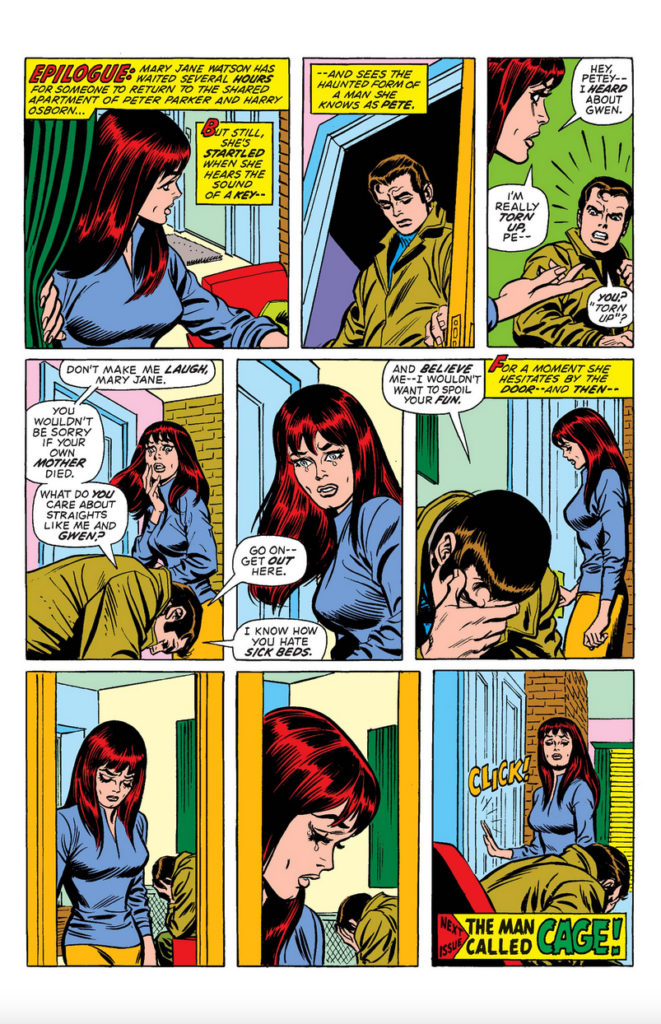
33:30: Chip Zdarsky’s Daredevil, available now!
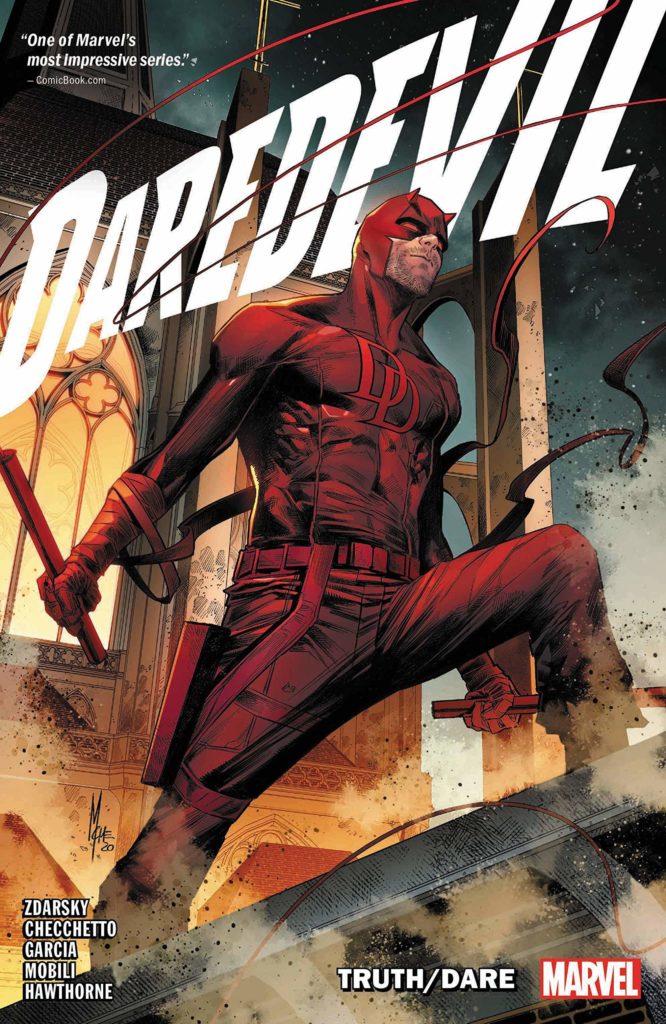
35:00: Here’s an example of the fluid-filled ugly crying in Eichiro Oda’s One Piece manga, published by VIZ.
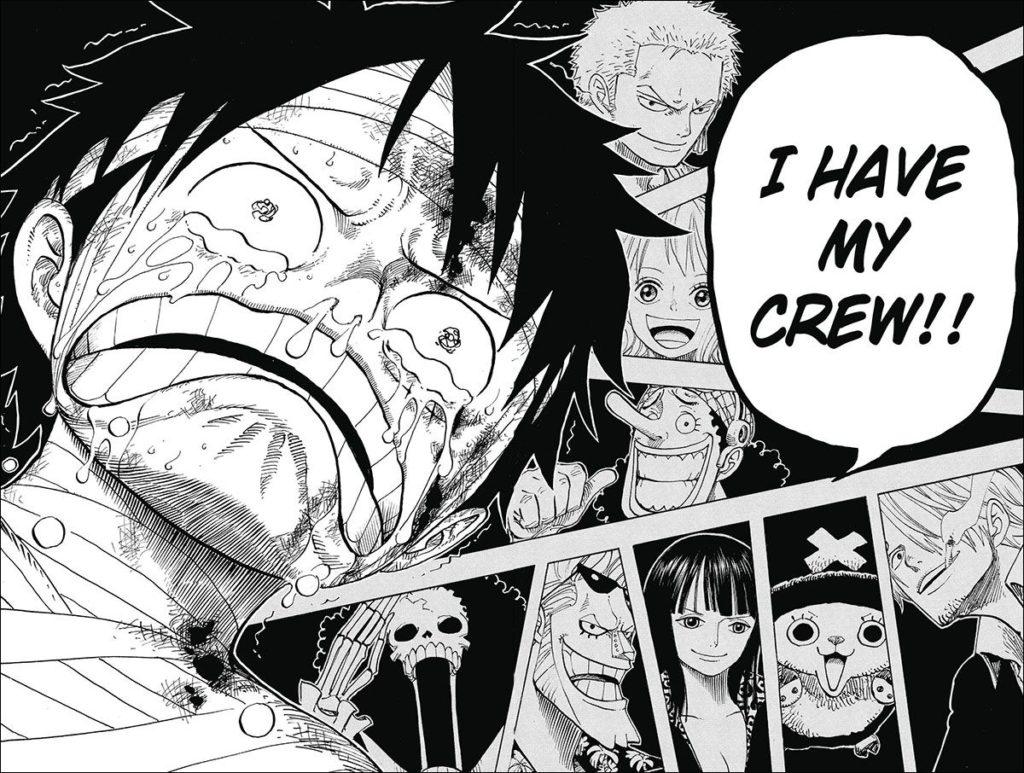
35:30: A character getting shot with an arrow really does raise the stakes for Yona.
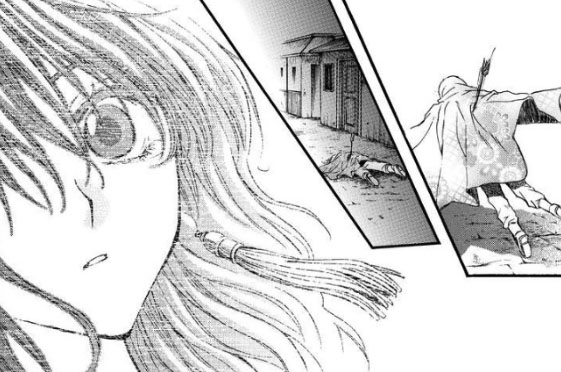
40:15: Mangapionioning? No. Mangasplaining.
Hah, just kidding. Mostly Mangapinioning.
40:39: Here’s that example Chip mentioned of a translucent balloon. As mentioned, this could be anything from the touch-up artist completely redrawing this balloon from scratch to a simple drop-in, but it’s kind of amazing how much ‘invisible’ work goes into making manga.
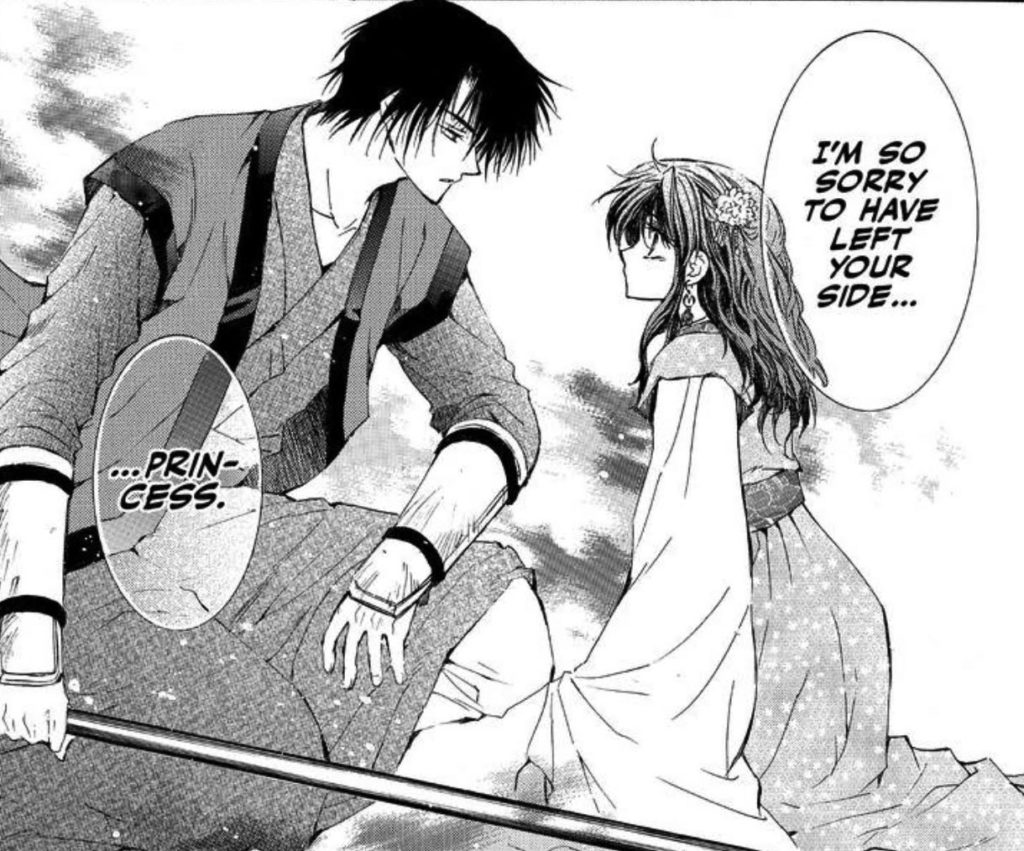
Shout-outs to manga letterers, your job is harder than most people think it is!
44:15: It probably would have been more accurate to say “You sometimes don’t know the condition of the files until after you sign the contract” rather than “Often.” Things are better now than they used to be!
44:25: So yeah, shojo manga has all kinds of stuff floating around in the background. David here calls out page 4, because there’s a pattern behind the King, that sort of implies order and beauty, and then very specific flowers behind Yona, that probably mean something but also they’re pretty. I found this article that talks about flower tropes in manga and anime and what they might mean, but if someone has a better 1:1 explanation, by all means link it in the comments and I’ll credit you! 🙂
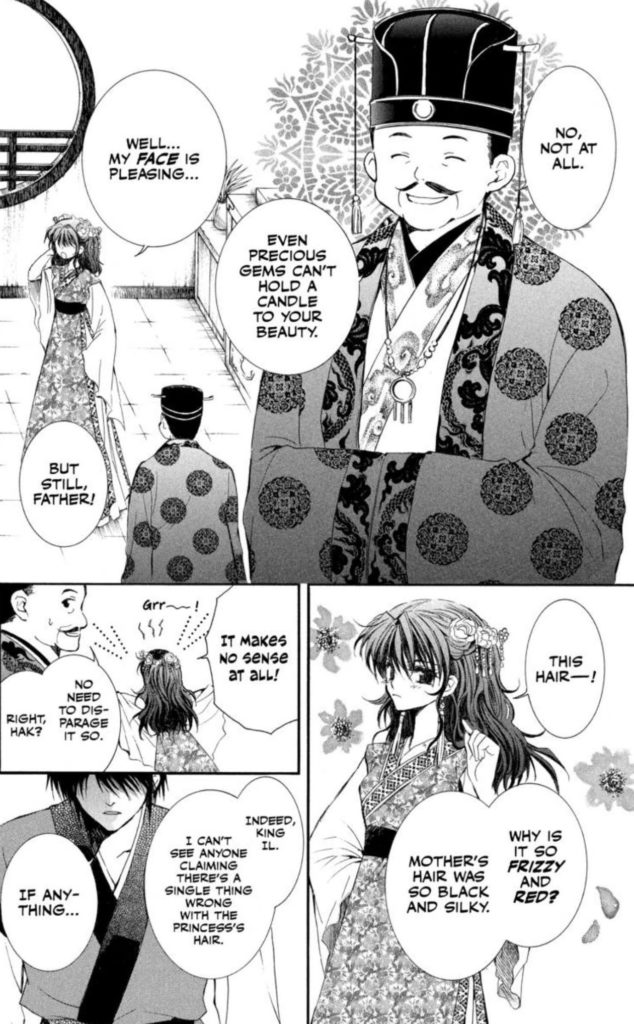
45:00: From last week’s pick Monthly Girls’ Nozaki-Kun, it’s Mikoshiba-kun who does the flowers and the sparkles!
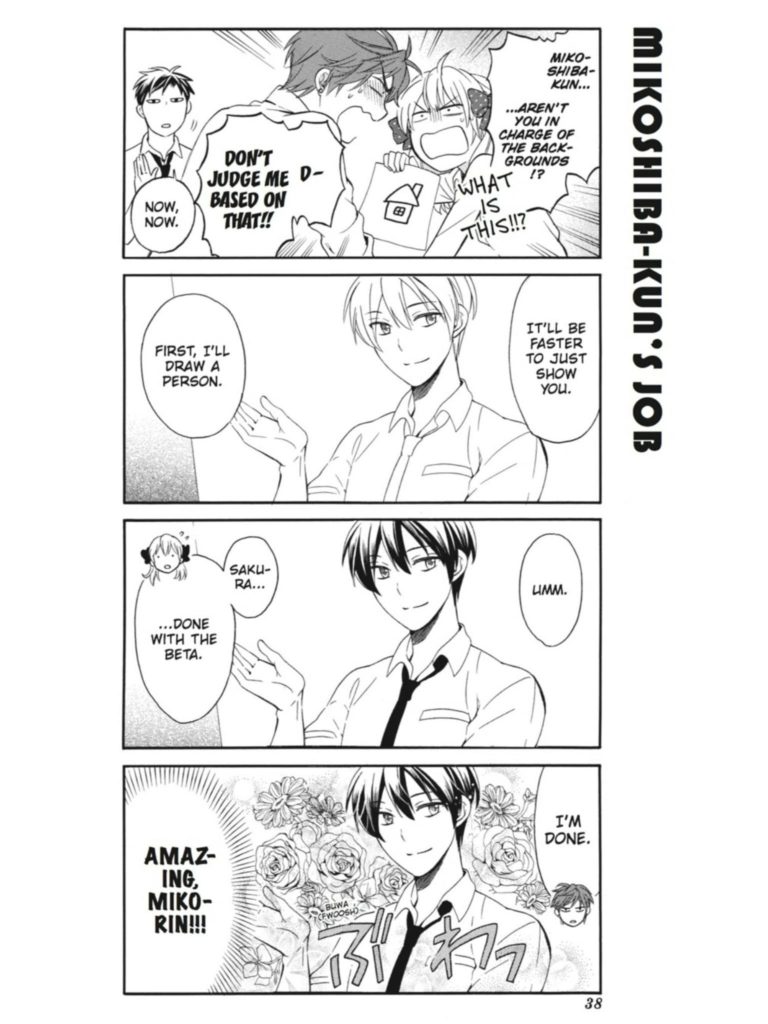
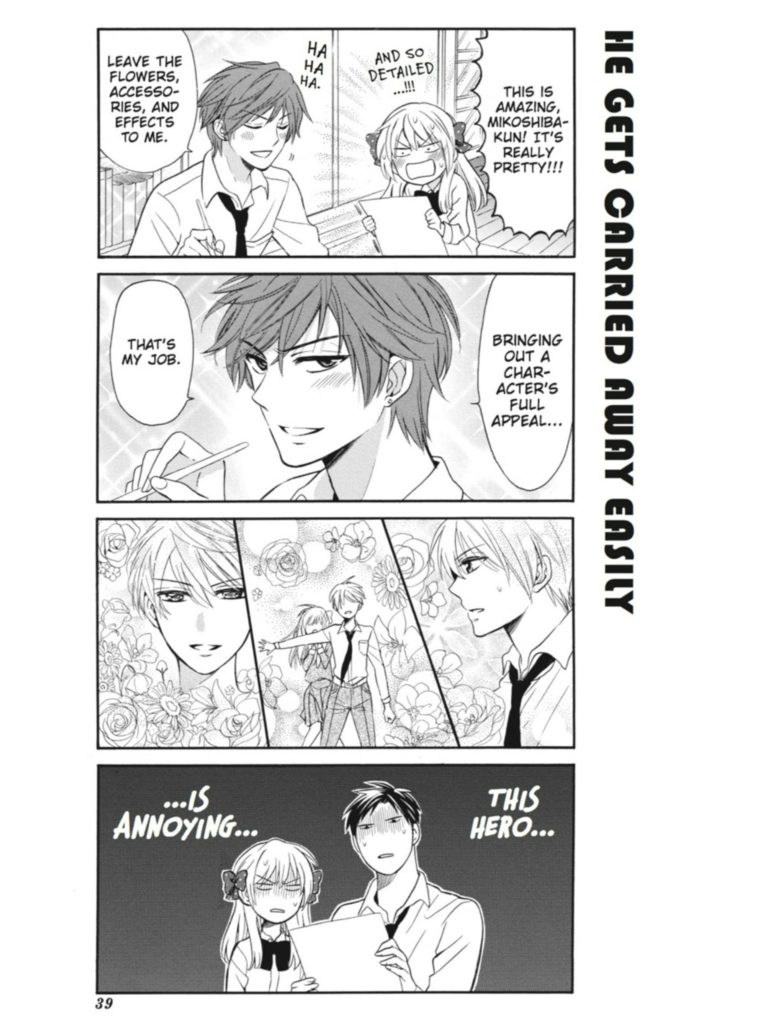
47:00: The shojo manga magazine Hana to Yume is known for having fantasy-influenced manga. Deb mentions the mega-popular manga Fruits Basket (now in omnibus form from Yen Press), as well as Mizuho Kusanagi’s other English-language manga, NG Life, and Mugen Spiral.
We also mention Inu Yasha, the manga by Rumiko Takahashi, a lot. Takahashi both establishes a lot of manga tropes, and also uses a lot of tropes in her work, and Inu Yasha is definitely her most popular manga in English. The story of a girl who falls down a magical well and into a world with a hot half-demon dude that she has feelings for and has to track down a MacGuffin. It is a classic of shonen manga and the manga and anime are still deeply beloved.
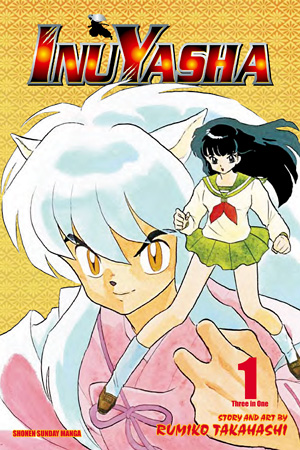
49:00: For the record, Komi Can’t Communicate runs in Shogakukan’s Weekly Shonen Sunday magazine (where Inu Yasha ran, actually), making it shonen! I thought it was Seinen for some reason, sorry! Anyway it’s a story about a girl who is so intimidatingly pretty that she never learned to make friends, learning to make friends. It’s published in English by VIZ! It’s good! Check it out!
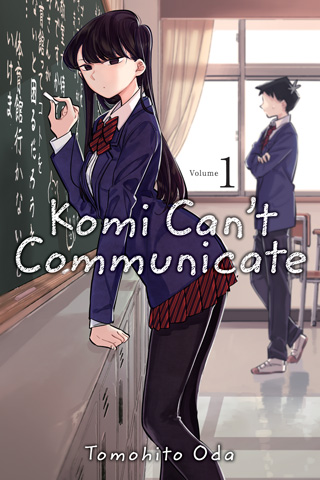
49:30: The notes from the author! We explain this pretty well, but here’s some visual aids. First up, here’s what it looks like in Yona of the Dawn:
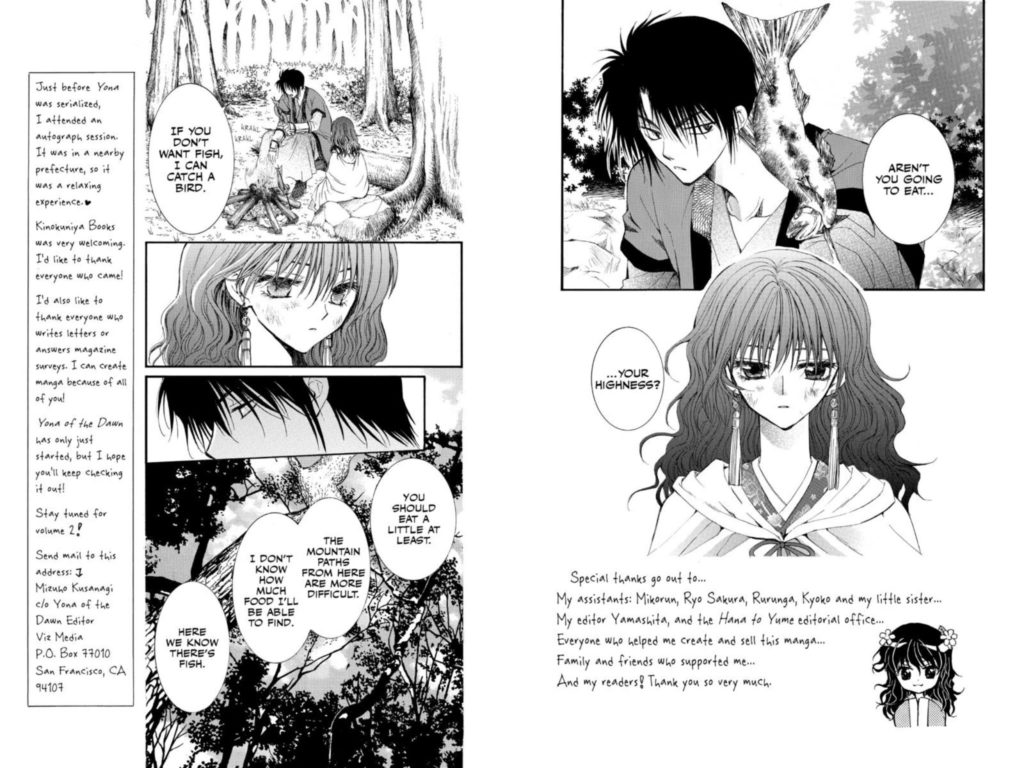
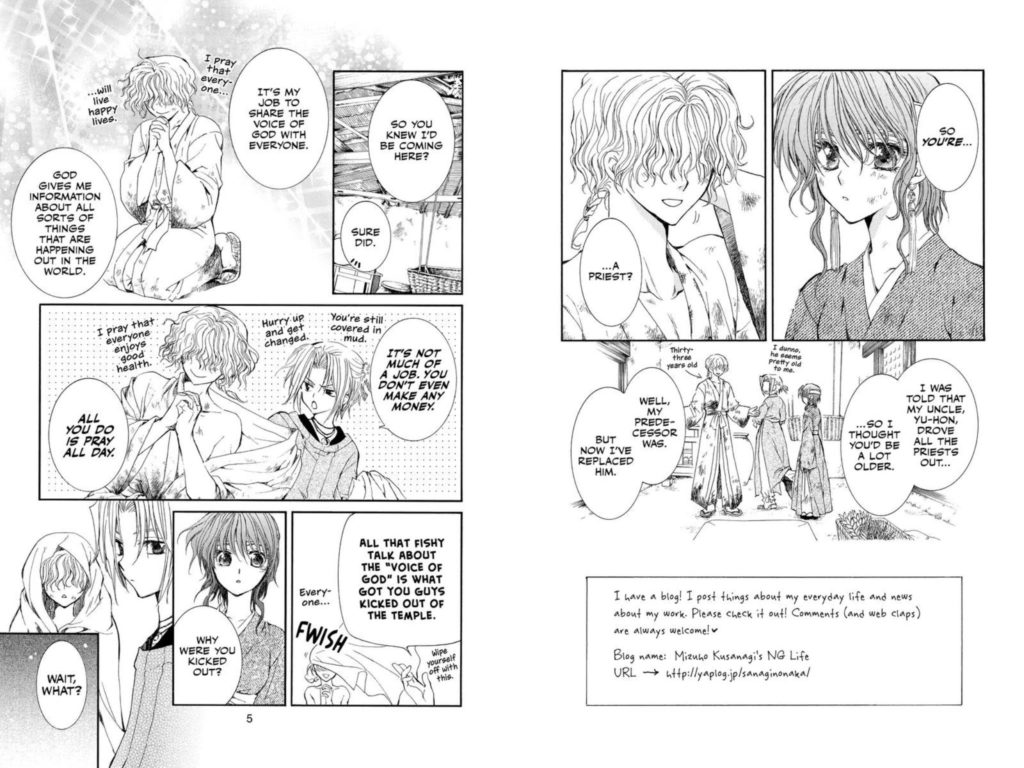
The thing is, when these sorts of stories WERE serialized in English magazines like Shojo Beat, that serialization was based on the Japanese tankoubon collections, so it included the author notes. If you haven’t bought a bunch of manga magazines off the racks in Japan, you might not know about the practice of running ads on story pages.
So here’s a cool thing. I actually checked and I didn’t have any contemporary shoujo ‘phonebook’ manga magazines to show you what it looks like before we get the edited tankoubon versions, but I did actually have a couple of classic shojo magazines…!
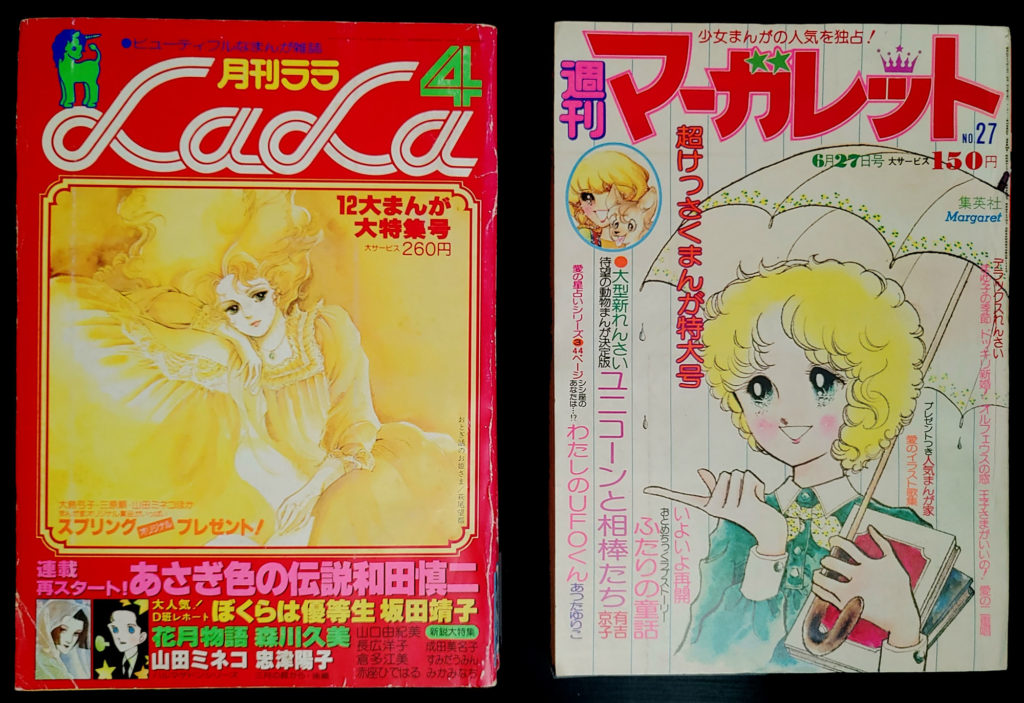
On the left, it’s the December 1977 edition of Lala Magazine, published by Hakusensha. The cover is an original illustration by Moto Hagio, and there’s a sticker(!) of this image still bound into my copy. On the right it’s the June 27, 1976 edition of Margaret Magazine, published by Shueisha. The cover is illustrated by Swan manga-ka Kyoko Ariyoshi, and it’s her series Unicorns and Buddies, which was serialized just before Swan started. Both magazines are still published today!
Okay, now back to what we were talking about: Manga running ads on the same page as story content. Almost every story in these magazines had this happen at least once, and it’s pretty easy to see what’s ad content and what’s story content. Here’s a bunch of examples, and I apologize for not being able to provide author credits for the manga shown.
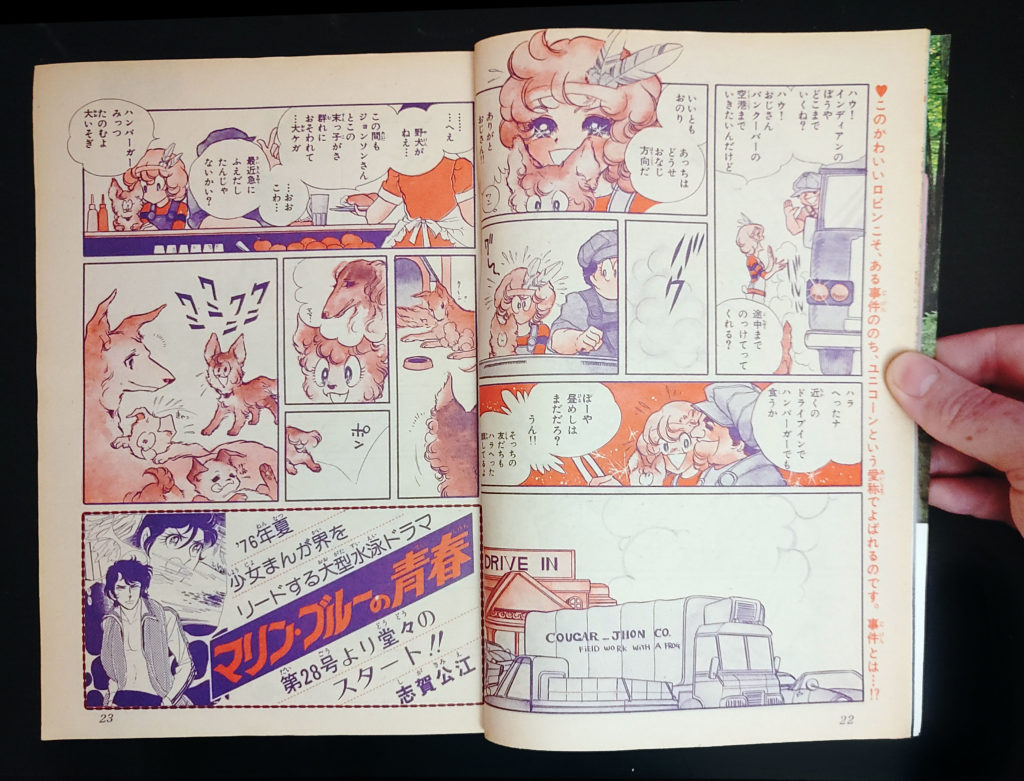
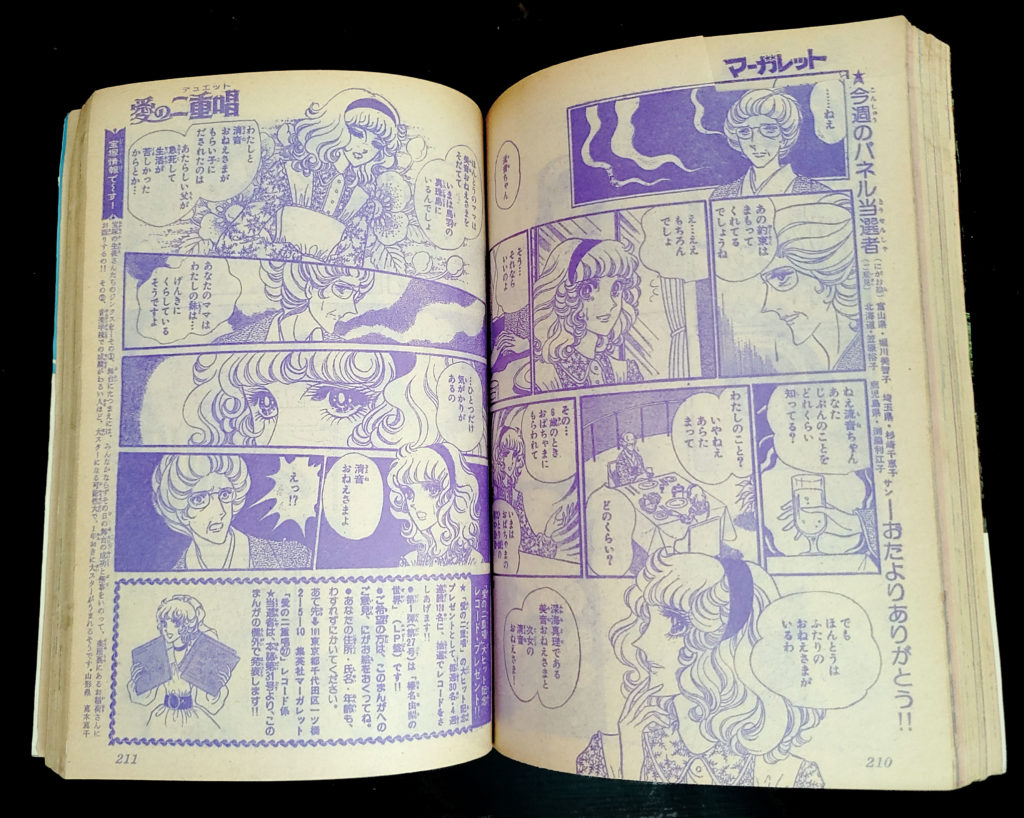
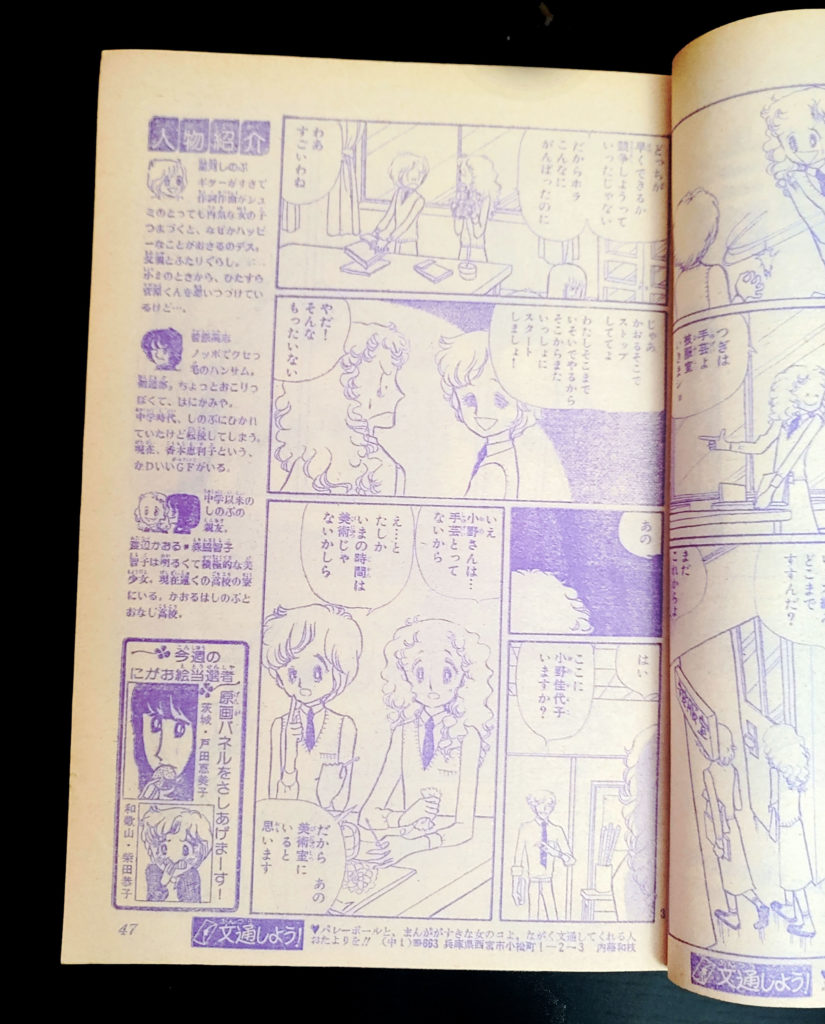
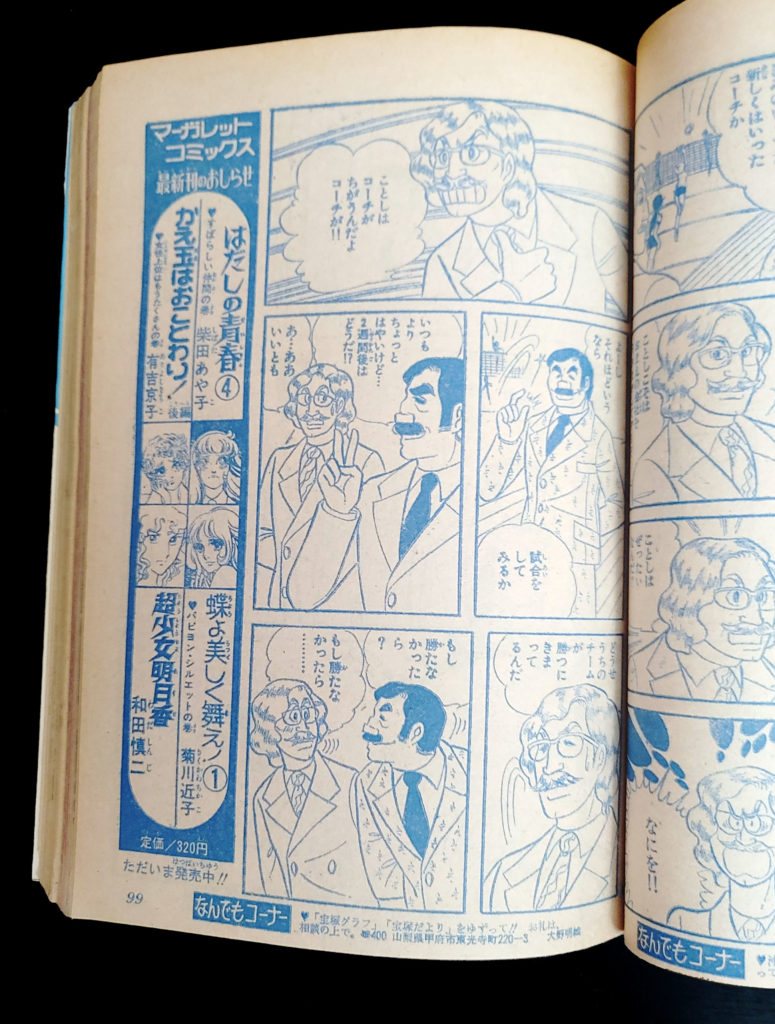
Now it’s also worth noting that every page also features a bunch of superfluous text along the top, bottom, and outside edges… These are also little notes and messages and things to the reader. Honestly, every page of manga serialization back in the day is something of a virtual overload.
While the ad-content stuff isn’t done in most shonen/seinen manga these days, it is still prevalent in many shojo magazines. Moreover, almost every manga magazine, including shonen and seinen magazines, will feature examples of that extra superfluous text. Not on every page like the above, but usually it shows up throughout the issue. Here’s an example of just such a text ad from the serialization of Kingdom, by Yashisa Hara, running in Weekly Young Jump Magazine.
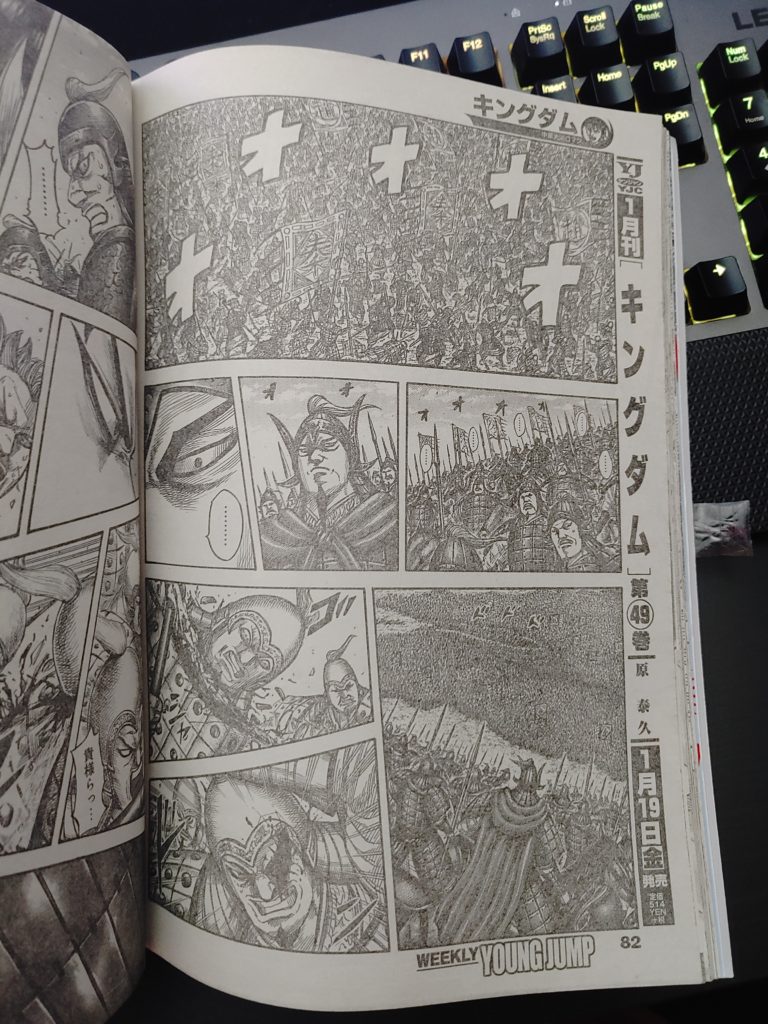
The serialization is the dirt-cheap, heavily subsidized version, and the tankoubon (or trade paperback) is the real one. I take Chip’s point about it interupting the flow of the story, or perhaps even undermining it, but it really is something you get used to. Like reading ‘backwards’. 🙂
It’s also worth noting that American comics used to do this all the time! There would be half-page ads, or sometimes two quarter-page ads, on pages with story content in single issue comics back in the day.
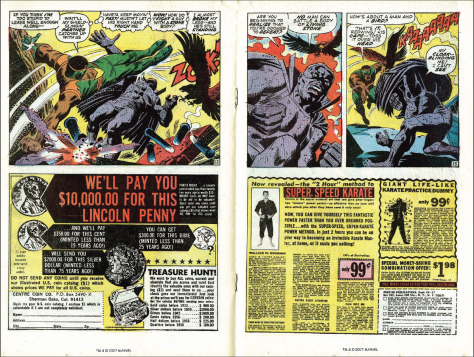
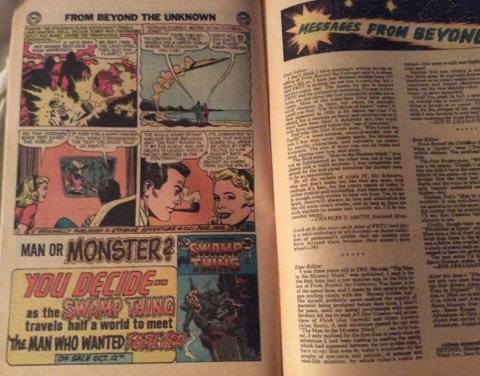
Interestingly, DC Comics brought back this practice 5 or 6 years ago, and it caused quite a commotion. Here’s a blog post from the time: https://nothingbutcomics.wordpress.com/2015/06/08/marstwixcontroversy/#more-42232
Now I feel like we successfully Mangasplained something.
53:21: Our first bleep! It’s funny, I asked David to bleep Chip saying that because I wanted this one to be a family-friendly episode since we were talking about shojo manga, and that’s generally for younger readers. Except I forgot we were also covering Yakuza Lover later in the episode, so… I guess that was fuck’n pointless eh? ^___^;;
59:00: There are a lot of dudes in Yona. Here’s a shot of the cast at… a point… in the future.
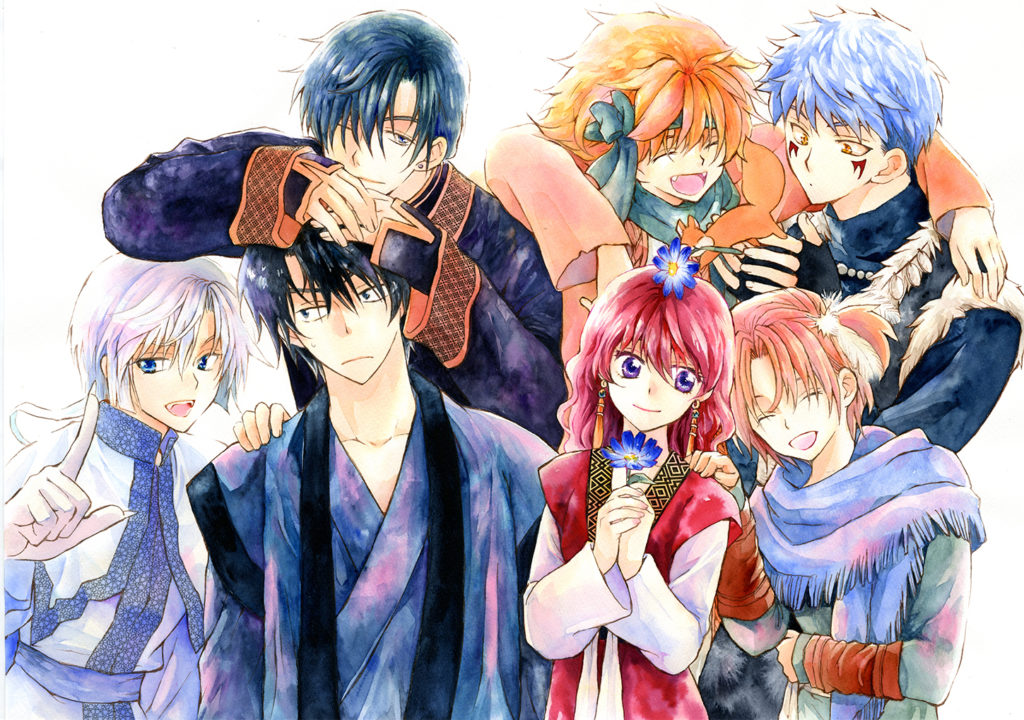
1:02:15: I’d been thinking a lot more about Yona of the Dawn since we read it a month ago, and while I still think competent isn’t inaccurate, I do think David is right in that satisfying is a good description. It’s a solid manga, and whether or not you’re a hardcore, dyed-in-the-wool shojo fan OR you’re curious about the genre and want to give it a shot. There are some structural problems in the first volume (so many flashbacks!), but if you can stick with it to volume 3, you’ll quickly be able to tell whether or not this is for you.
1:03:04: THE BREAK!!! Please remember timestamps after this point are approximate).
It’s time for our first ever #sponsored content, with Manga Blind Date, Sponsored by VIZ Media. David recuses himself from this one due to also being employed by VIZ Media and wanting to have some separation between church and state. So here’s Deb, Chip, and Christopher…!
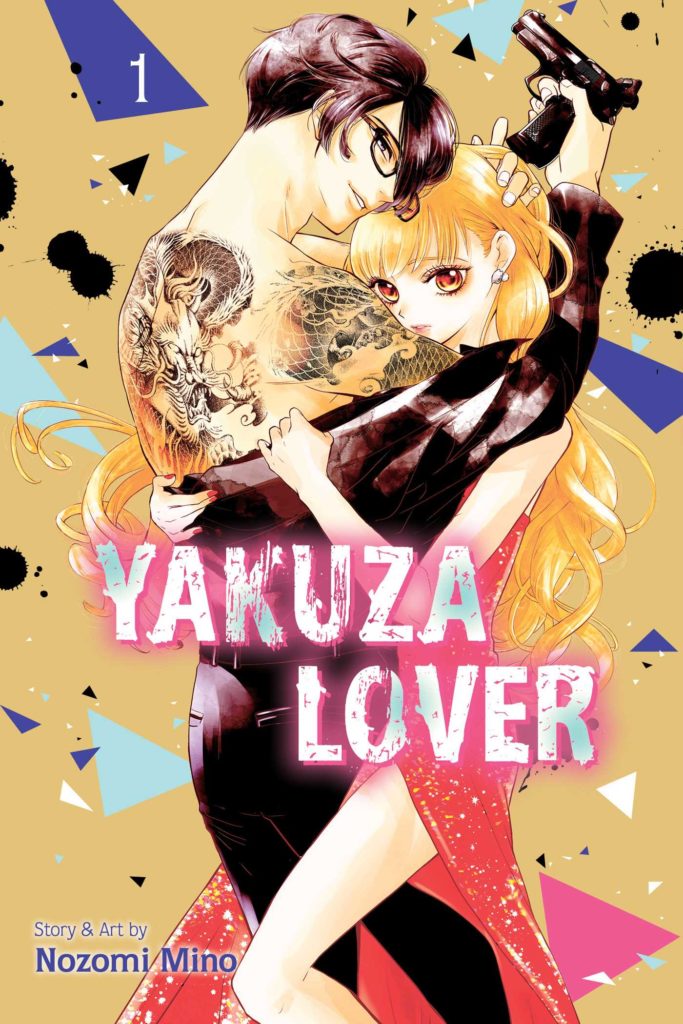
Yakuza Lover Volume 1
恋と弾丸 (Koi to Dangan)
By Nozomi Mino
Translation by Andria Cheng
Touch-Up Art & Lettering by Michelle Pang
Design by Yukiko Whitley
Edited by Karla Clark
Published by VIZ Media (Print/Digital)
Read a free preview at https://bit.ly/YakuzaLoverPodcast, but since it’s 18+ you’ll be asked to create or sign-in-with a VIZ.com account.
1:05:00: As Deb mentions, this series currently runs in the shojo manga magazine Cheese!, but it started out in their spin-off magazine Premium Cheese!, published by Shogakukan. Running monthly, it features a variety of manga from ‘safe’ to smexy, in a variety of genres. Cheese! titles that have been published in English include Dawn of the Arcana by Rei Toma, Honey Hunt by Miki Aihara, and The Water Dragon’s Bride by Rei Toma, among others. It’s worth noting that this title is significantly more Rated M For Mature than those titles, and it looks like the other Premium Cheese! Titles are all firmly in the sexier space, and it’s fascinating that the popularity of this series saw it move up to the main mag.
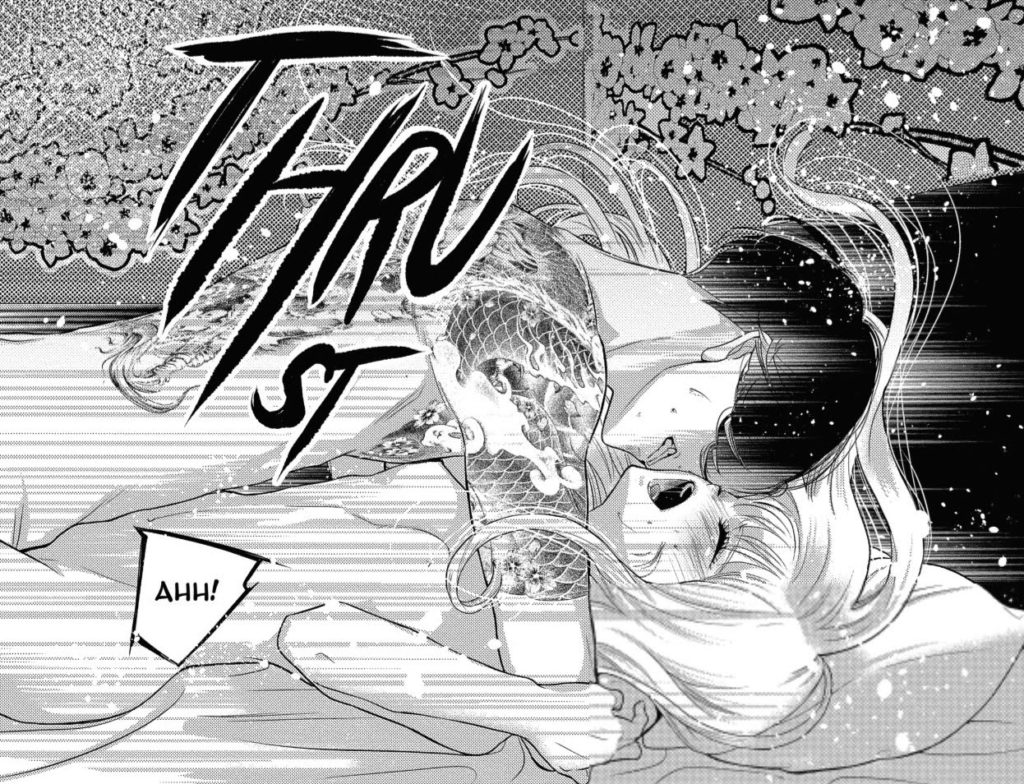
Oh wow, while poking around researching the above, I saw this header on the CHEESE! Website that says this series has sold 3.5 million total volumes so far. This thing is HUGE in Japan. I imagine it will be big here, too.

1:07:00: To be super-clear, this book is not for children. It’s just very much a story told in the vernacular of manga for teens… which frankly makes perfect sense considering what’s selling these days. Maybe think of it like the shojo manga version of a shonen battle manga that got really weirdly violent and gruesome, when a lot of shonen battle manga is pretty easy-going, if you catch my drift? Like, for people that like shojo manga and keep wanting to read stories told in that style, but maybe they’re in their mid-20s now? Like Deb says, for people who want their shojo manga to get to the point.
And, for the record, frankly 99% of straight hentai (and a high percentage of BL) is told in pretty much the same way, so if you know what we’re saying here, you know exactly what we’re saying here. We’re very much not trying to pick on or call out anything, this is good, clean, wet, Cheese-y fun. 😉
1:09:18: But… Look, there’s a lot of tongue action here. We’re not mentioning this to be funny. We’ve all seen hentai, we’re not shy, but the tongue action comes on strong.
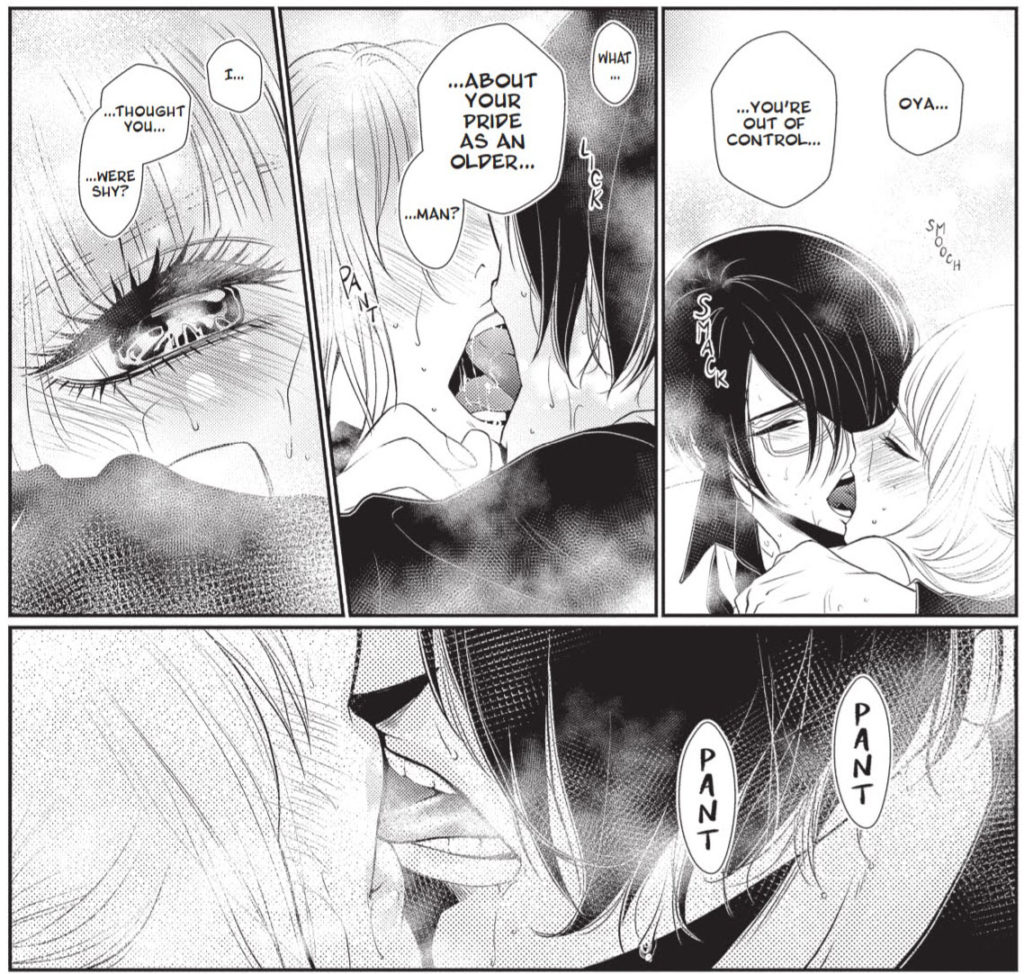
Maybe this is for you though! Maybe you’re all about the tongue action!
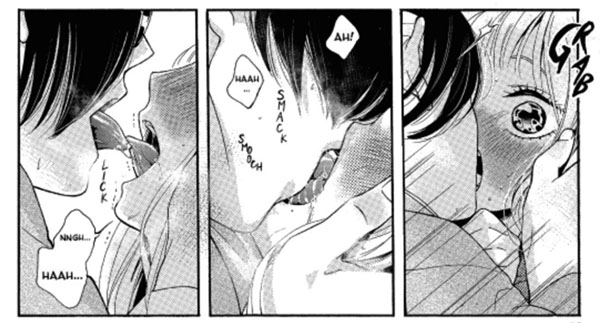
1:10:00: Another trip back to the theme of “Stories about the Yakuza are problematic,” which they honestly are, but also honestly not so much in this title. We’ll talk about that more as the podcast continues. Fun-fact, The Way of the Househusband is the second-most popular episode of Mangasplaining, so you may all be very much on board with these series’.
1:11:00: Worth noting that there are no genitals depicted in this book! There are some boobs though, but no nipples. But definitely sex acts? It’s simultaneously the most softcore and most hardcore thing? It’s kind of incredible, and you can tell the manga-ka and editor are walking a fine line.
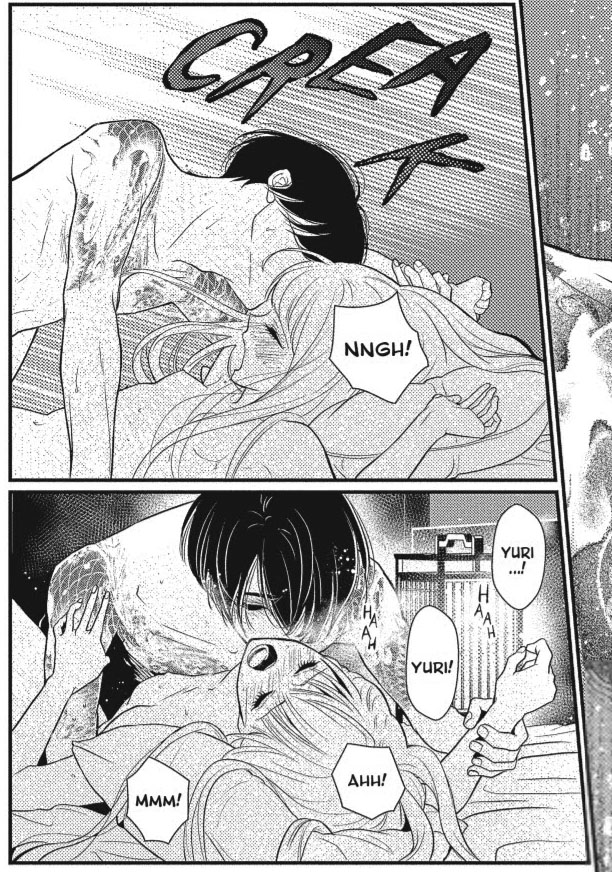
1:12:55: Here’s the scene I mentioned, the “Emotional Money-shot.” There are a LOT of them in this book, it’s incredible.
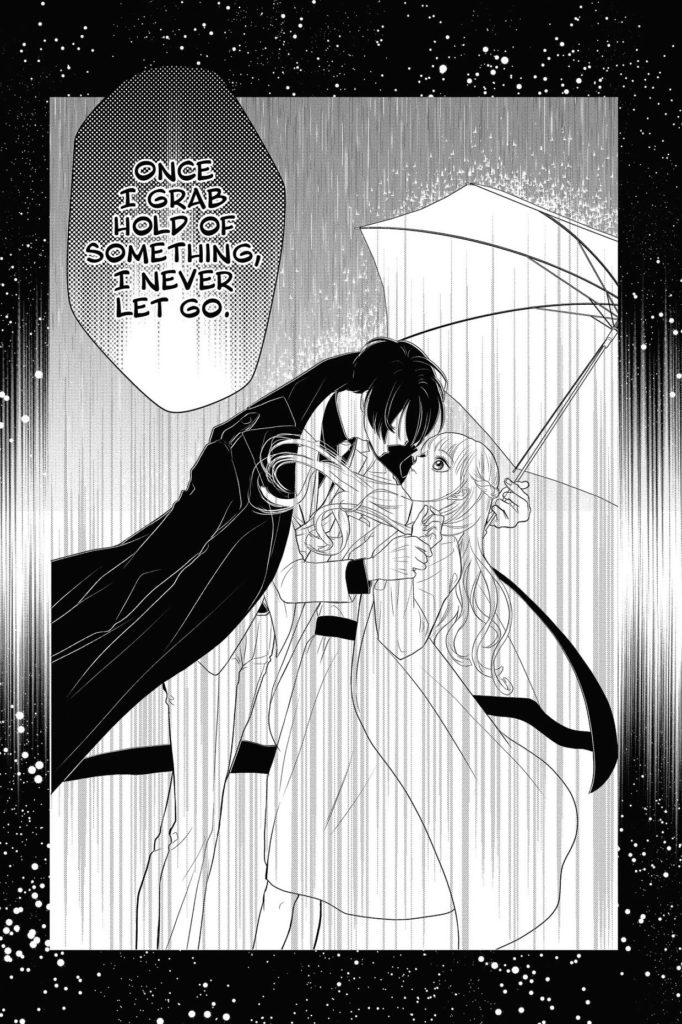
1:13:20: Chip’s dramatic reading of the following page needs work.
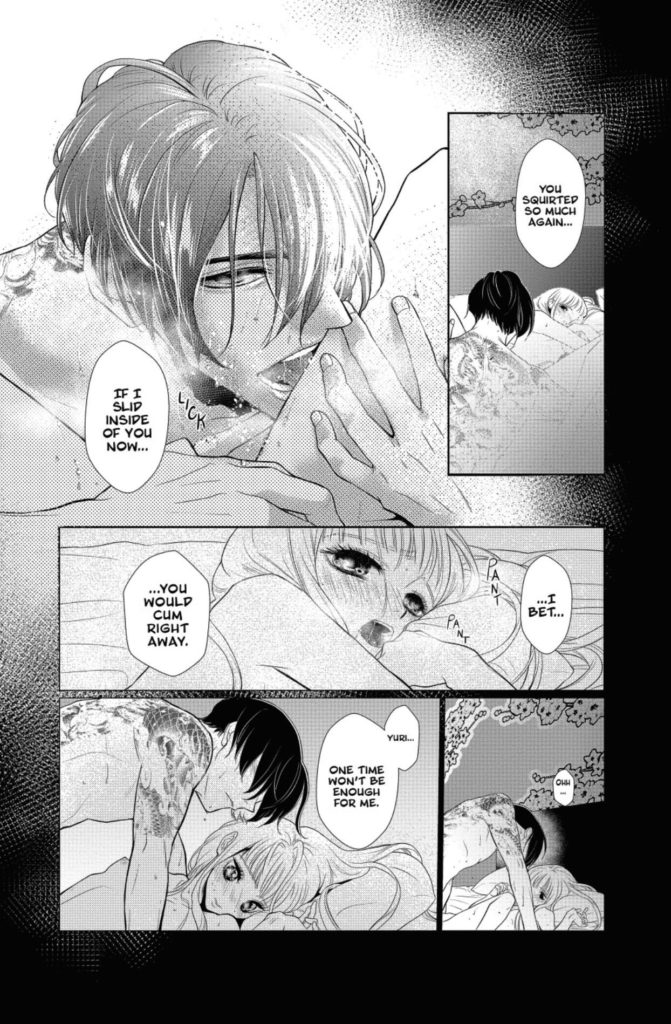
1:14:00: As mentioned, his butt is kinda disappointing.
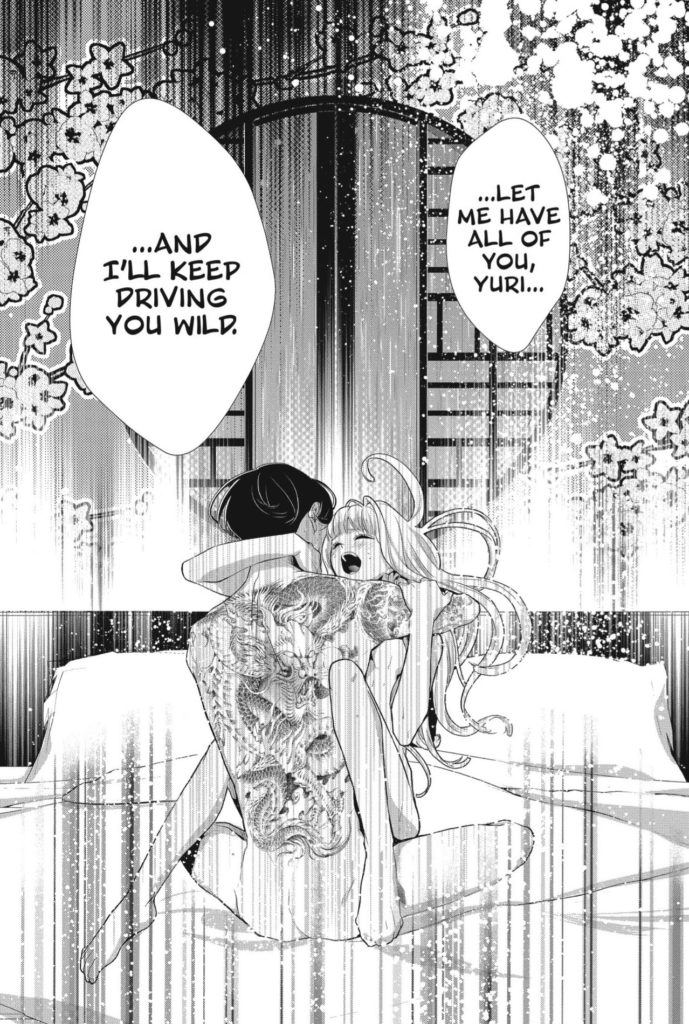
1:16:35: There’s a cocaine orgy in the first 10 pages. So tell me again how all shojo manga is the same, Nozaki-Kun!
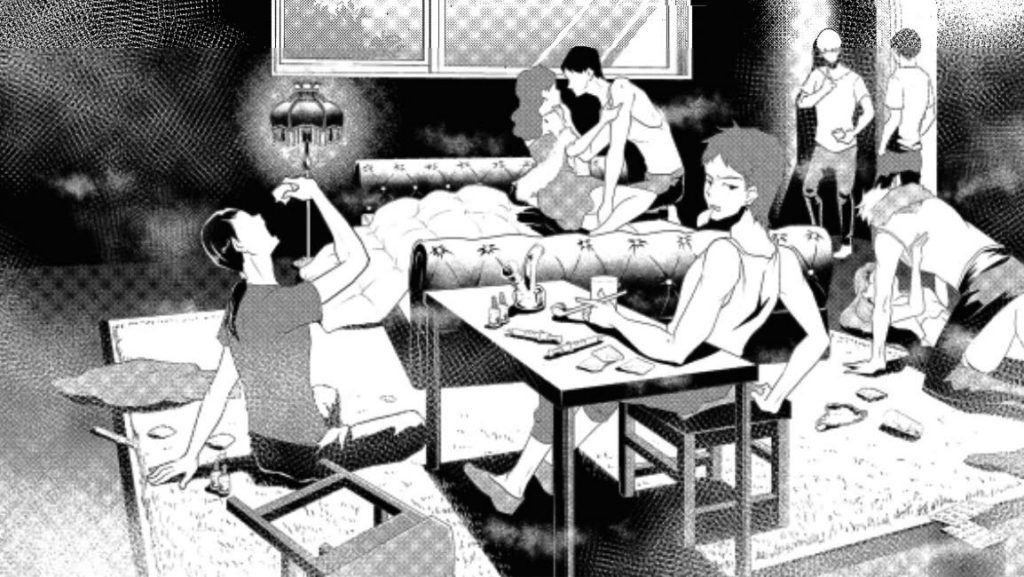
1:17:15: This manga is utterly insane.
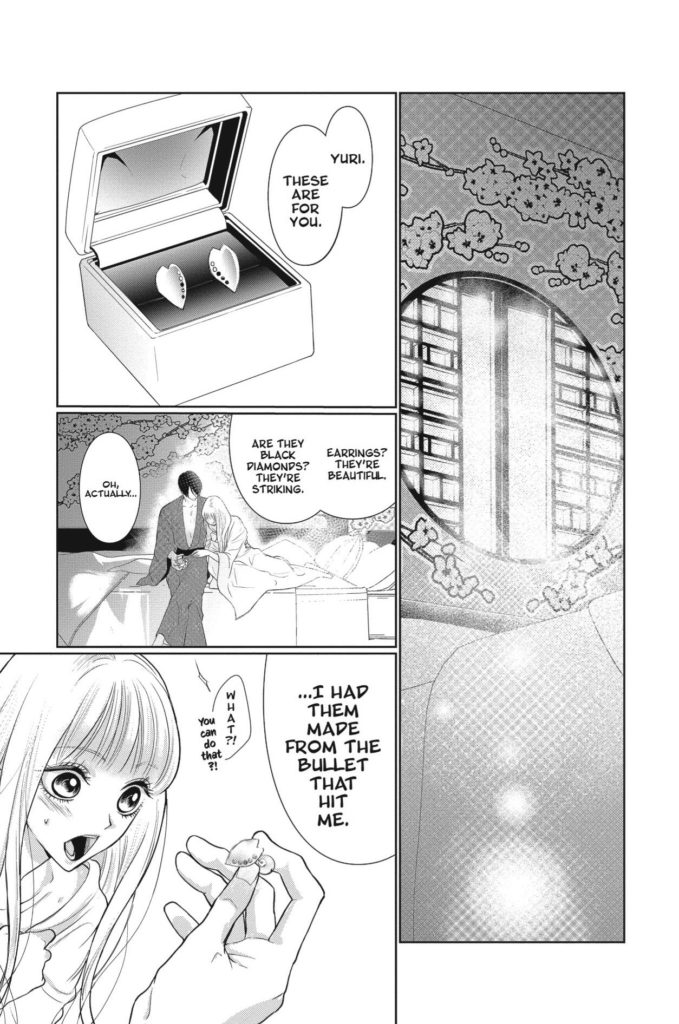
1:17:40: “A weird sexual Disneyworld version of reality.”
– Chip Zdarsky, Mangasplaining.
1:18:20: As Chip says, no one is like, signing up for the mafia after reading this. It’s absolutely a safe space to explore this idea of getting with someone ‘dangerous’. That kind of stuff is important! For what it’s worth, there are actual manga about the ‘reality’ of dating a member of the Yakuza that play out VERY differently, Sennetsu by Ayako Noda is one of those, Japanese only. Yakuza Lover is very different than that., and way less problematic in the larger context of glorifying criminal behaviour. Now that I think about it, it’s not too far off from TWOTHH.
Also! Very interesting that this book ended up getting juxtaposed with Yona of the Dawn, because they both touch on themes of taboo and exploring different fantasies through literature. That cousin stuff we went on about before? RELEVANT.
1:19:21: As mentioned, pretty good drawing of a white tiger.
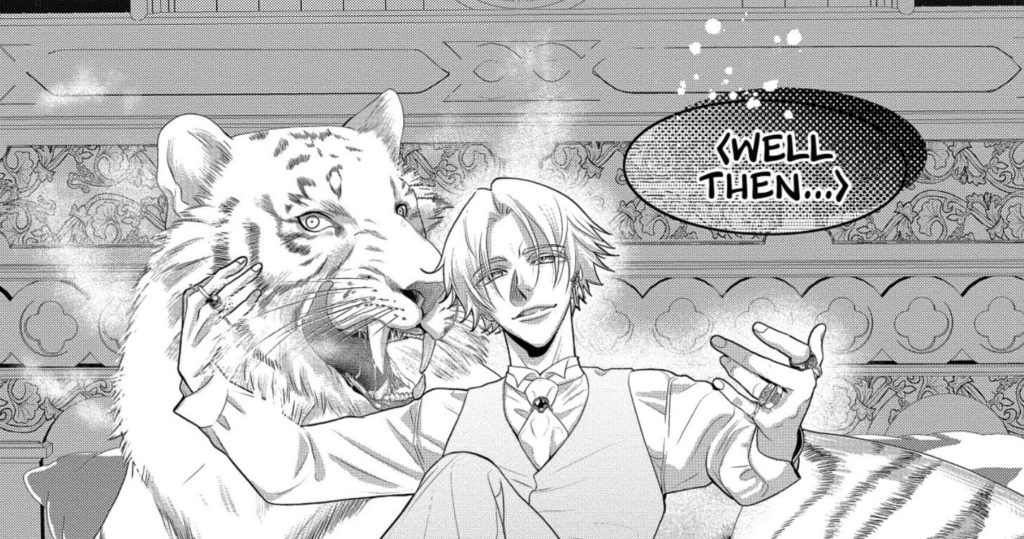
1:19:30: A quick search shows that this is actually the first manga by this creator to be released in English, and honestly other manga by this manga-ka look pretty different? Anyway, I’m into the art style. Someone tell me if it doesn’t get bogged down in the Russian mafia subplot and maybe I’ll give volume 2 a shot.
1:20:40: As mentioned, you can check out a free preview at https://bit.ly/YakuzaLoverPodcast. You’ll need to sign up for a VIZ.com account to do so, but it’s worth seeing. We covered a lot of ground with this review, but frankly, it’s pretty balls-to-the-wall and there’s so, so much more to enjoy. We only hinted at the hostess club story! Also, if you’re reading this far into the show notes anyway, I’ll let you know that just clicking that link helps us out by letting our sponsor know that people actually listen to this podcast… so… Clicking would be much appreciated. 🙂
1:21:40: And as mentioned, the way she draws the Yakuza’s hair is unreal and I love that hair. Here’s an even better shot of it.
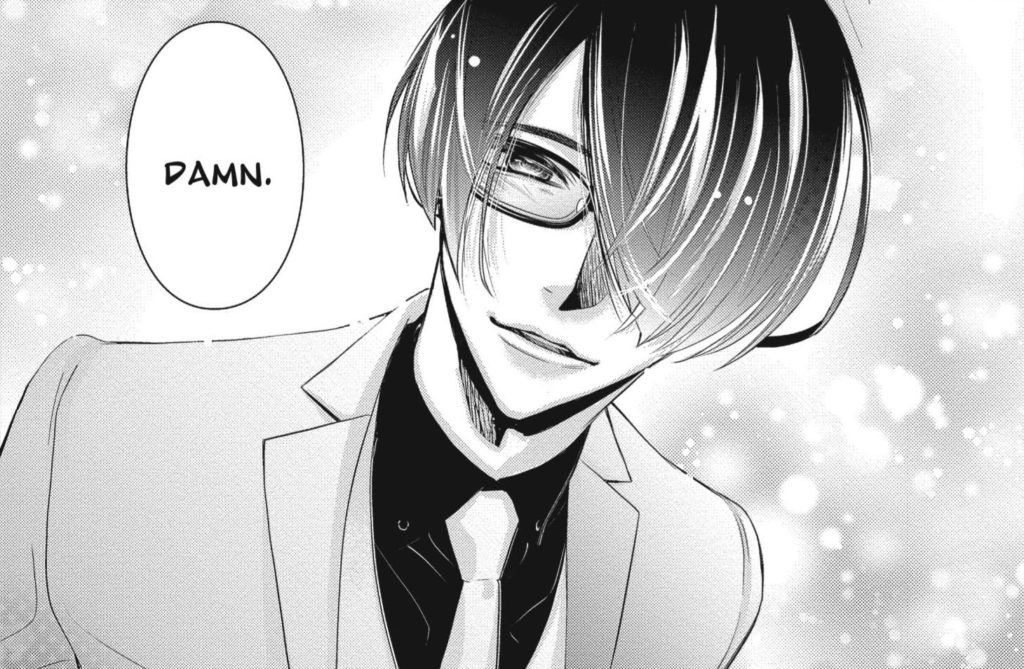
“This hair looks so good I could smell it through the manga,”
– Christopher Butcher, Mangasplaining
1:23:29: So yeah! That was our first-ever double episode, featuring Yona of the Dawn and Yakuza Lover. Let us know what you thought! We might do another one down the road. 🙂
And as mentioned, coming up on Mangasplaining:
Ep. 20: A Bride’s Story Vol 1, by Kaoru Mori. Published by Yen Press. (June 29)
Ep. 21: Saint Young Men Vol 1, by Hikaru Nakamura. Published by Yen Press. (July 6th)
Ep. 22: The Journal of My Father, by Jiro Taniguchi. Published by Fanfare Ponent-Mon. (July 13th)
Ep. 23: BL Metamorphosis Vol 1-2, by Kaori Tsurutani. Published by Seven Seas (July 20th)
Ep. 24: Franken Fran Vol 1, by Katsuhisa Kigitsu. Published by Seven Seas (July 27th)
Ep. 25: AKIRA Vol 2, by Katsuhiro Otomo. Published by Kodansha (August 4th)
S2e1: Phoenix: Future, by Osamu Tezuka. Published by VIZ Media (September)
Thanks again for listening to this episode!
Find a Comic Store Near You at comicshoplocator.com
Check out Mangasplaining composer D.A.D.S. on Spotify.
See you next week!
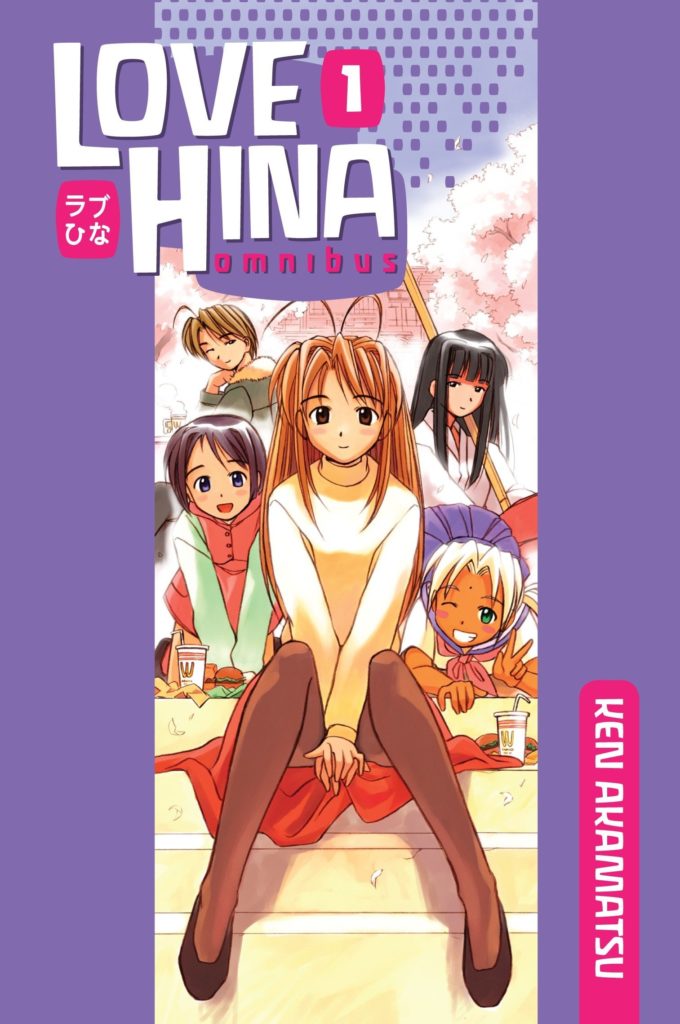
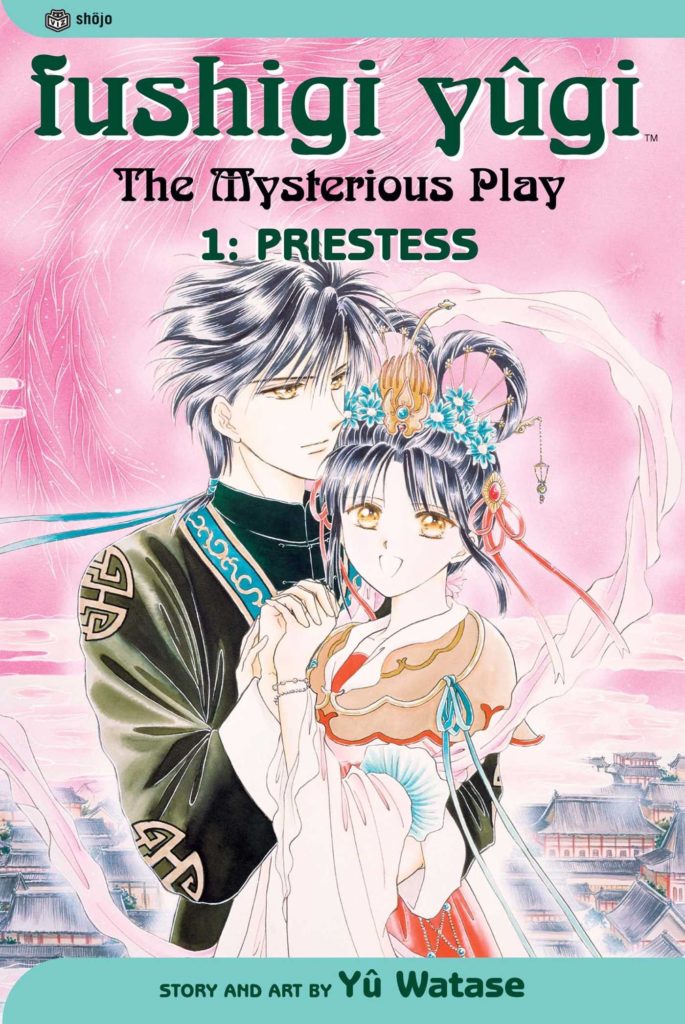

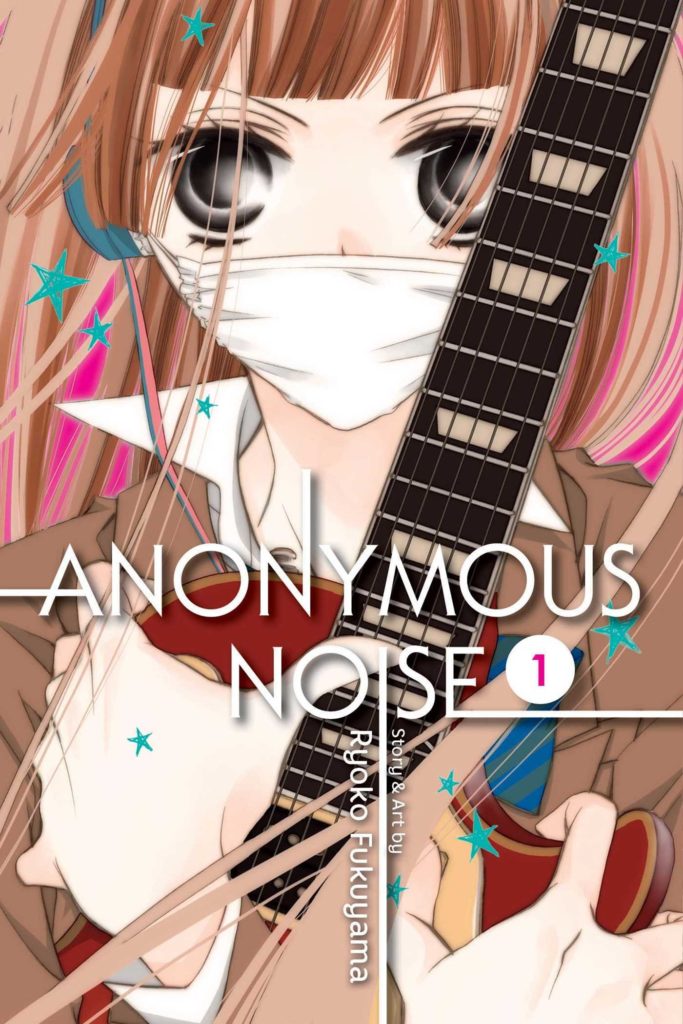
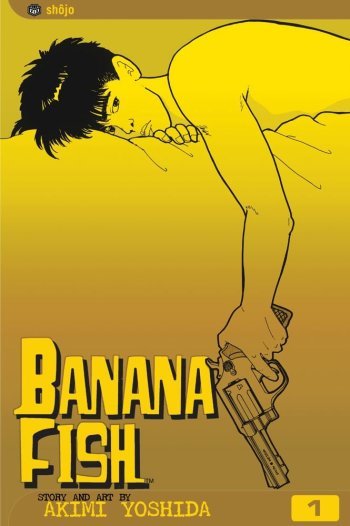
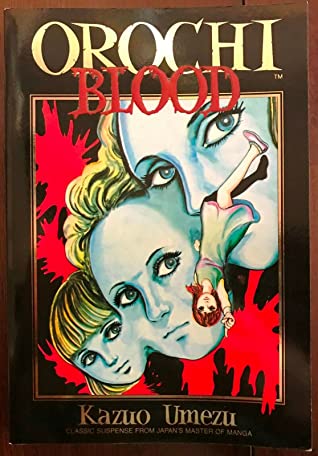
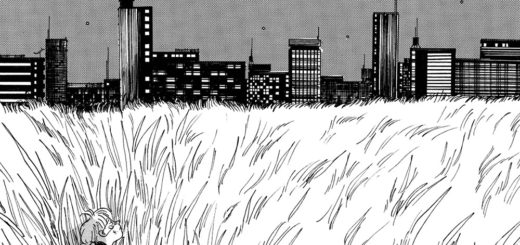
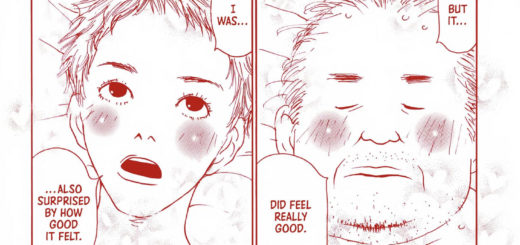
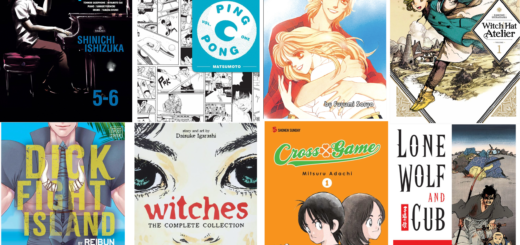
Oh man, I wish someone translated Shimizu Reiko’s Kaguya-hime into English. It’s an amazing story, with BL, Yuri, incest, clones, space mold, and poly love interest triangle with people from the moon. And an hidden ancient mystical kingdom and it’s all set in modern day life. It’s like *everything* all at once. You folks would love it.
Amen (though I’d take any more Shimizu manga–I’m a bit surprised actually that we never got Himitsu – Top Secret in English). Kaguya is my fave of her titles (thanks to the French translation) but I would never have been a Shimizu fan if it hadn’t been that among their crazy/wonderful initial lineup of shoujo titles, CMX released her almost as insane Moon Child in the 90s (and managed to finish it before they went bust). Just wonderful stuff (not sure how hard it is to find used now, but I’m not selling mine!)
As I was listening to this episode, I did think of the title Futari Ecchi or its title here in english, Manga Sutra. 🤦♀️ I had to see if I could obtain an copy and only volume two is available via RightStuf brand new on sale as the other three are hard to find and pricy. I know this is Out of Print and will most likely won’t see another chance at getting a rerelease but if it does, would you all review it?
I don’t know why we wouldn’t, I remember that being a really fascinating series back in the day…!
Thank you for discussing topics like trim size, bleeds, editing art and rights contracts. These are things that I think even seasoned manga readers might not know about. Hope to hear more like this in the future.
About author comments showing up in the middle of manga, I’ve seen it in Rurouni Kenshin, a shonen manga, so it’s apparently not exclusive to shojo manga. Here’s one from chapter 82 that takes up a freaking half a page!! Ffffffffff
I’m From Japan, another shonen manga, has them too. Look at the giant vertical bar in chapter 44 page 12 here. There was originally an ad there. This series is about the different prefectures of Japan and what makes them famous (according to what the story’s characters say anyway). Its Japanese Wikipedia says the publisher provided the ad space to local businesses and governments to let them promote their hometowns when it was their prefecture’s turn to be depicted in a chapter.
Btw, nice work on the sparkly sound replacing Chip’s expletives. I totally cracked up hearing that. Also at Chip’s dramatic reading of the erotic dialogue. Which I noticed he incorrectly read from left to right lol. Old habits die hard.
Cool, thanks for the behind the scenes info there, much appreciated! 🙂
Thanks for another great episode! I concur with KC that I too enjoyed the discussion around the production of manga in translation. I think the average person really doesn’t know how rights issues or creator control affects when, how, and if a manga gets a release outside Japan.
Shojo manga really does have its own visual idiom, one that can take a new reader time to acclimate to. Nowadays, I would say the widespread popular of shonen series like “One Piece” have really made shonen idiom much more understood, but even if you think you know comics or manga, shojo can be, I guess, counterintuitive. Lots of focus on mise-en-scène over narrative-driven panel to panel layout. It’s funny that manga in general is known for (stereotyped?) for having what Scott McCloud called a meandering to it. I could see that being the case with shojo, but to me a lot of shojo just luxuriates in the layout of a single page, and when it’s a multipanel page you don’t have each preceding panel feeding into the next so much as all of them amalgamating into a whole. (I know this doesn’t apply to all shojo series or even every page within a series.) And I don’t know if I’m crazy in saying this, but it feels like shojo manga retains more of the Tezuka influences then shonen manga. Haven’t really ever unpacked that thought, so don’t ask me to defend it, but it’s something I was kind of struck by when reading Tezuka’s works, especially Phoenix.
Still catching up on the episodes.
On the whole cousin as romantic interest theme in many works. Cousins can marry in Japan, in fact in almost every country on earth. Marriage between first cousins is legal in all of Europe, Canada, and US blue states, in the US the most conservative states are the ones who ban it.
BTW Just bought Yakuza Lover.
Can’t wait top hear what you think. 🙂